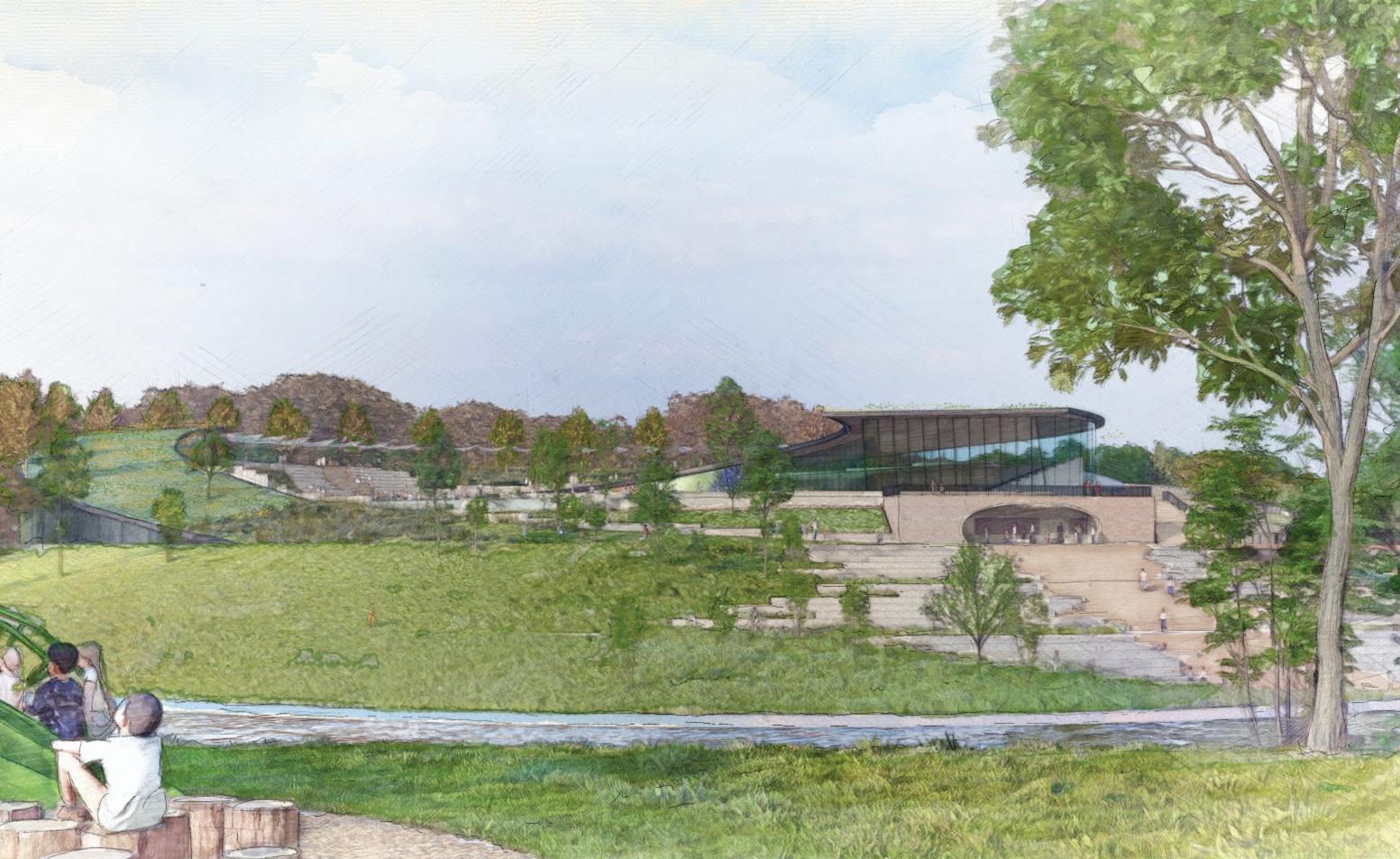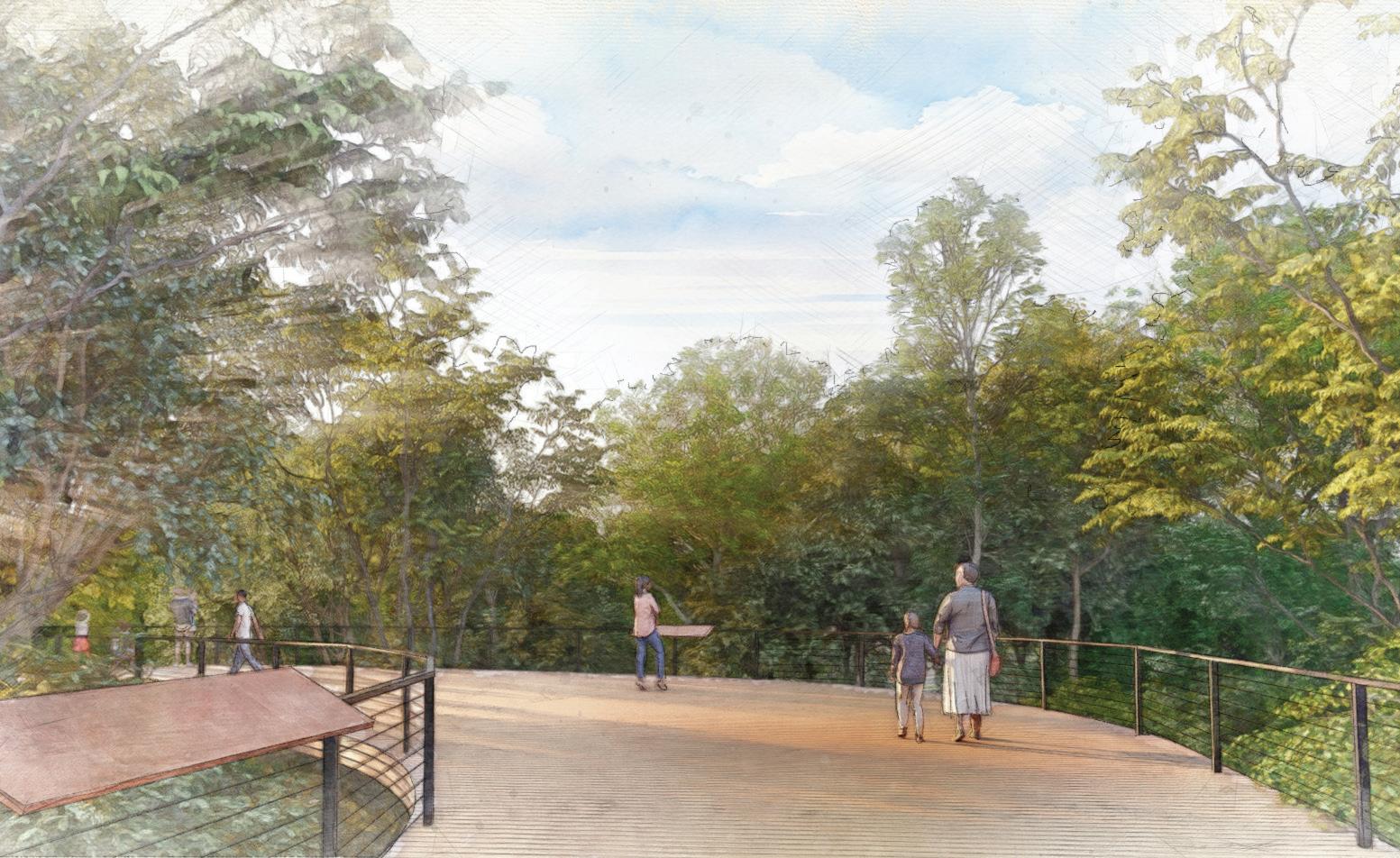

Project Overview & Outcomes
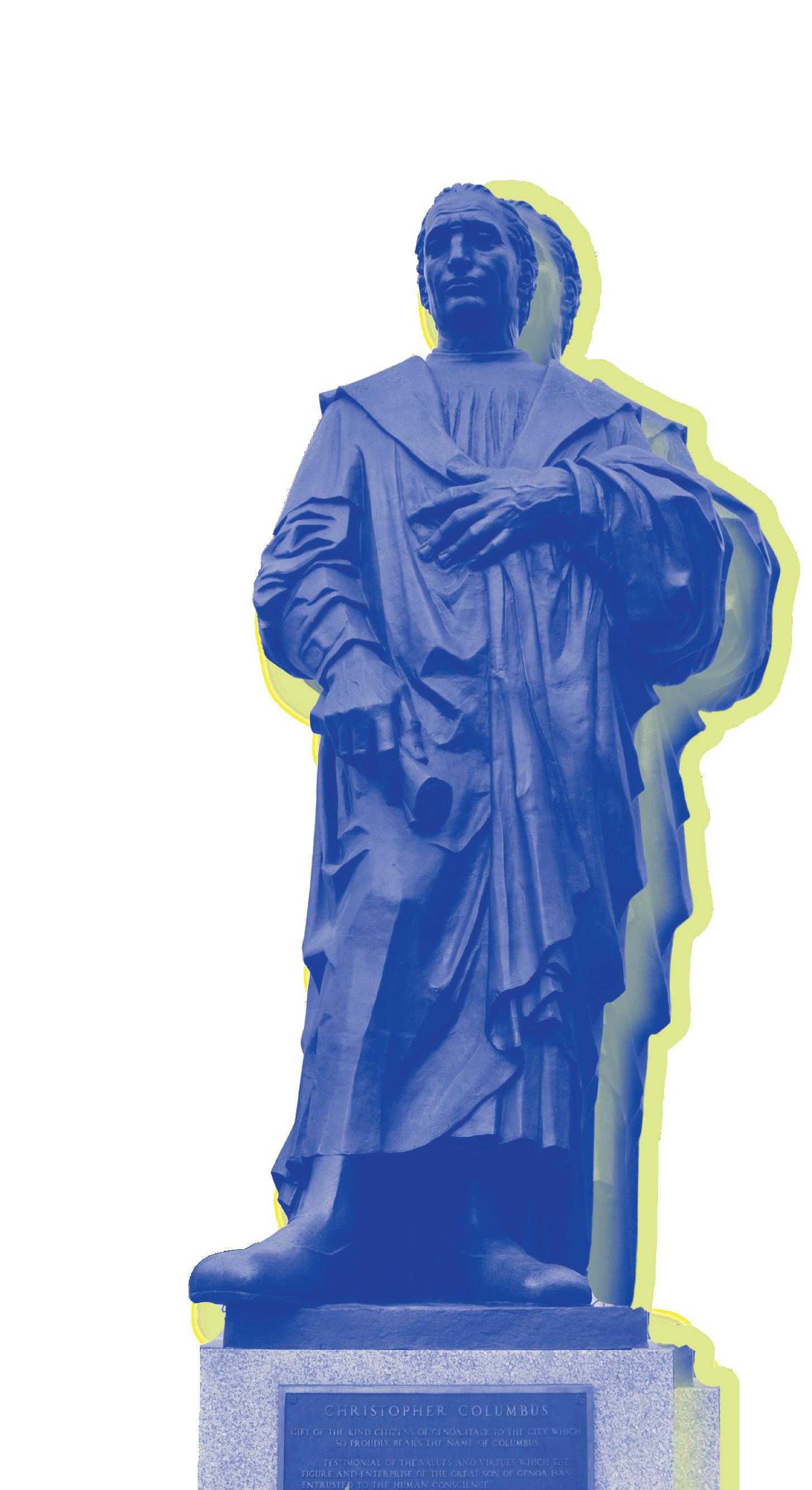
Reimagining Columbus is a two-year initiative funded by the Mellon Foundation’s Monuments Project.
This initiative began in 2024 with community engagement and concludes in 2025 with 3 major outcomes:
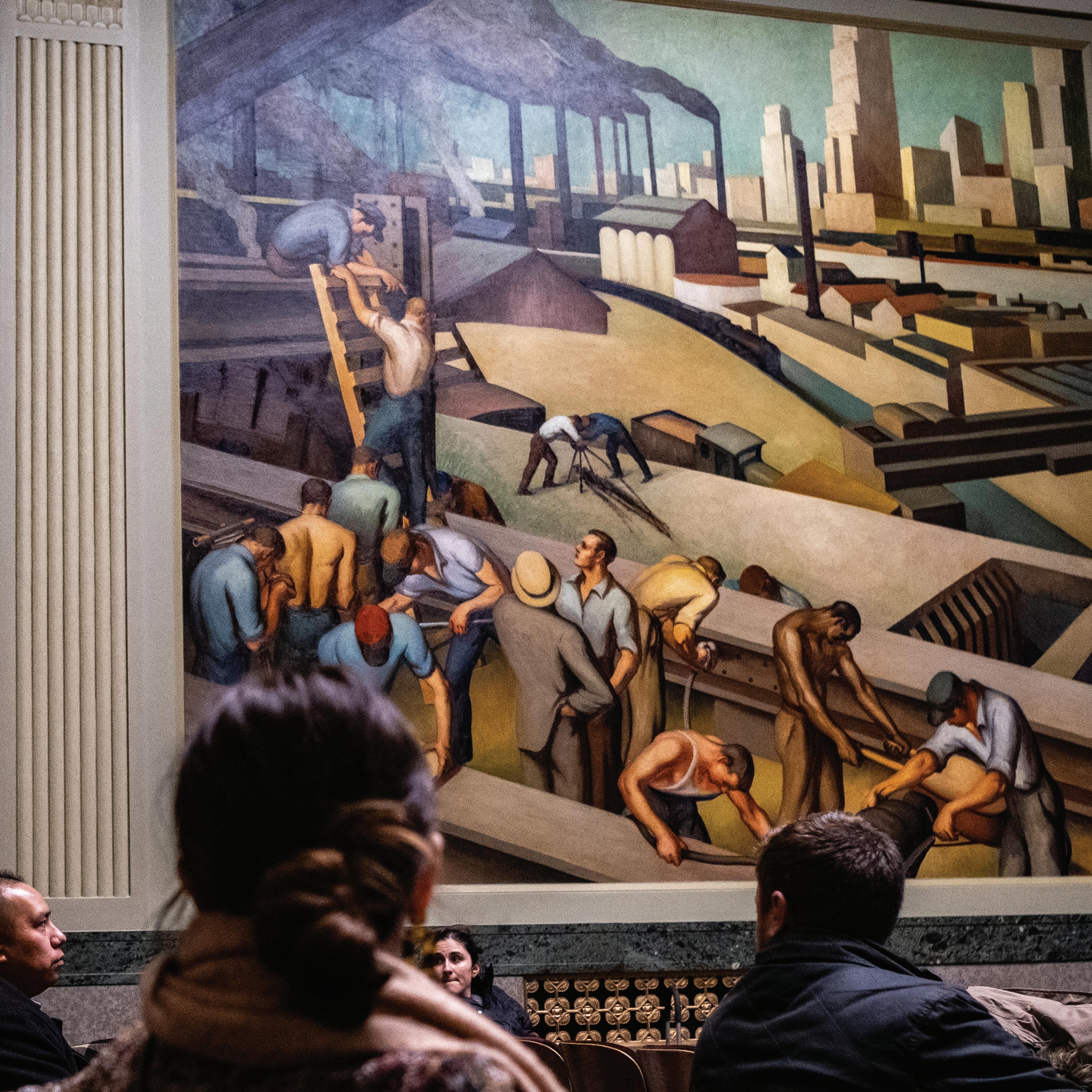
A Method for Future Civic Engagement inspired by the Project A Generational Vision for the Future of
Public Art Plan for City Hall Campus
Reimagining Columbus is a response to the question “Where do we go from here?” with respect to the city’s Christopher Columbus statue.
This Mellon Foundation–funded initiative allowed community members to learn, listen, and be heard in an extended conversation with each other about our histories and our values, and how to move forward together. This section describes Reimagining Columbus and how it was designed to elicit a more accurate and nuanced presentation of the city’s Christopher Columbus statue.

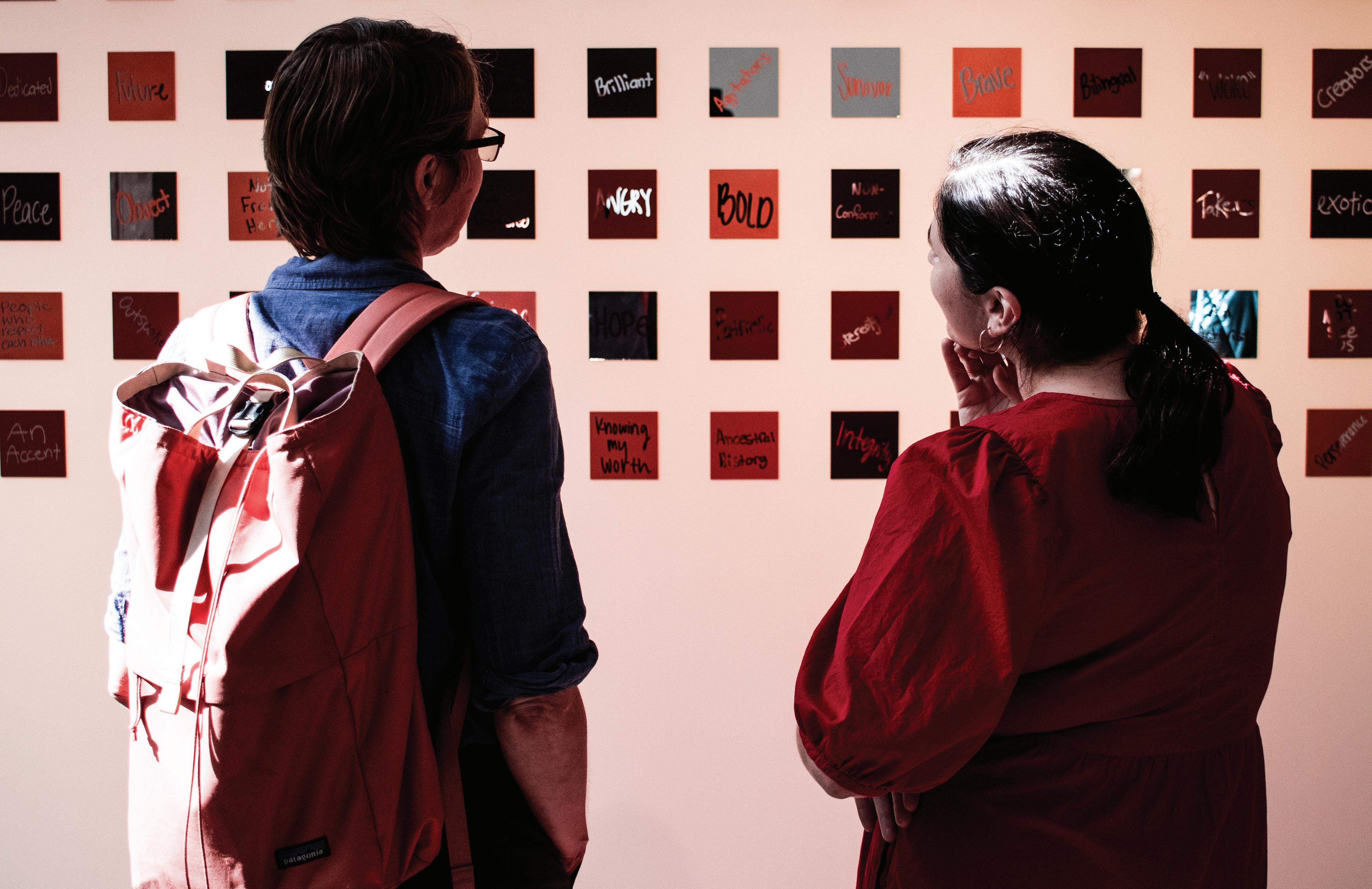
COMMUNITY VOICES & VISION
Since March 2024, the Reimagining Columbus project has actively engaged with the public through a robust schedule of over 20 events and 35 videos including historical tours and learning series videos totaling over 20 hours of content.
Each subsequent engagement event built off of the feedback provided in prior sessions. The input provided by community members during these events was central to the design process.

PUBLIC ENGAGEMENT HAS INCLUDED A DIVERSE ARRAY OF ACTIVITIES, SUCH AS:
• Two Family Friendly Nature Hikes
• Two Lectures with Interactive Q&A Sessions
• Two Design Your Own Monument Family Workshops
• A Four-day Screening of the Learning Series Videos at Columbus Museum of Art
• A Booth at The Columbus Arts Festival
• Hosted Two World Cafe Discussions
• A Story Lab
• Five Separate Story Boarding Focus Groups
• Attendance at the Navajo Nation Economic Development Summit
• A Community Cookout event at the Leatherlips Monument
• An Engagement Roundtable with facilitators
• A Film Screening and Community Discussion on Columbus’ history
• Leave Good Soil Gallery Show
• Routine updates to the Advisory Committee
• Project Celebration Event (August 2025)
• Public Art Panel Discussion (September 2025)
What we did What happened
World café
Attendees expected a microphone and a platform to talk about the statue. Instead, they sat at round tables and talked to each other, answering questions about cultural heritage.
What we learned
People investigated how family stories and identities are connected to larger issues facing our society today, and how the experiences of our ancestors are brought with us genetically into the present day.
Storylab
Panel of community members shared family histories that led to larger conversations with the audience.
Through our individual family struggles of immigration, colonization, and forced relocation, we are here today because they survived.
Story boarding focus groups
Many needed the security of being surrounded by members in their same affinity group to honestly share hopes, fears, distrust, and longing for acceptance.
Similar themes arose in all the groups – expression and pride of heritage through family, faith, connection to community, and the desire to belong and feel welcomed in public spaces.
Online Learning Series
Robust online video series focusing on topics related to the project. More than a dozen videos are available on the project website.
Capturing community voices as well as expert commentary on diverse topics adds context and complexity to the engagement. A screening event was held at Columbus Museum of Art with more planned in 2025.
Guest Expert Lectures
Tamarah Begay spoke on Indigenous Design Values. Kirk Savage spoke on the role of Christopher Columbus in the founding mythology of America.
Visiting experts offer a national perspective and builds relationship to the project and how we view society today.
Family friendly Programs
Events included youth workshops to make your own monument, nature walks to area Indigenous sites, and a community cookout.
Engaging events provided different ways to build community and connect with the project, shared local history, and each other.
Progressive Dinner
Leave Good Soil Gallery Show
A progressive dinner was held to celebrate the three outcomes of the project and seek community input.
Attendees provided feedback on recommendations for the City Hall Art Plan and for the Generational Vision.
Gallery show by artist Abby Kamagate who is the project photographer. Work focused on her perspective of the transformation she witnessed during community conversation.
Patrons viewing the work remarked on how they saw evidence of their own stories in each piece of art.
Learning Opportunity Description
Migration, Immigration, and the Growth of Columbus
Vice Provost Jason Reece of the Ohio State University discusses Columbus’ transformation in the 20th century, driven by waves of migration and immigration.
Discovery sheds light on legacy of Christopher Columbus
Columbus in the American Imagination
University of Seville Law Professor Pablo Vega uses historical documents to share the truth behind the iconic explorer Christopher Columbus challenging traditional narratives.
Professor Kirk Savage from the University of Pittsburgh explores the profound impact of Christopher Columbus on US history, the Doctrine of Discovery and the westward spread of Columbus named town, symbolizing American expansion and native dispossession. Audience Q&A was also recorded.

The Arc of Columbus
What is Indigenous Design?
A number of experts are interviewed to explore diverse perspectives within Columbus on Christopher Columbus and its connection to the City of Columbus.
Tamarah Begay and Jan Tifrea discussed indigenous design principles and how these principles are applied in design projects across the US.
The Statue and Its Presence in Columbus City staff and Columbus Art Commission members discuss the removal of the statue and the events leading to its removal.

A legacy of faith, food, and Family: Columbus Italians
Members of the local Italian Community share their rich history, enduring traditions, and vibrant culture that shaped the city.
Indigenous Talking Circle
Shannon Gonzalez-Miller hosts an indigenous talking circle exploring the indigenous community’s experience in Central Ohio.
Voices of Change in 2020
A powerful discussion by key community members share their personal stories and perspectives of 2020.

OUR CALL IS TO RESPOND TO THE EMOTION
This is about more than just a statue. There were several recurring themes through out the engagement series.
Common Themes Amongst All Groups:
• An appetite to be surrounded by nature
• A desire to feel welcome and accepted in public space
• A need to feel safe and protected in a place which explores difficult subjects
• A call for the designers to tell the truth
What Matters:
• Who and what we choose to honor in community spaces
• How and when we invite people to gather together
• Elevating people of all backgrounds in our city’s spaces and narratives
How we respond:
• Provide an opportunity for reflection and connection
• Provide an opportunity for the community to gather
• Provide an opportunity to interact with nature without prescriptive play
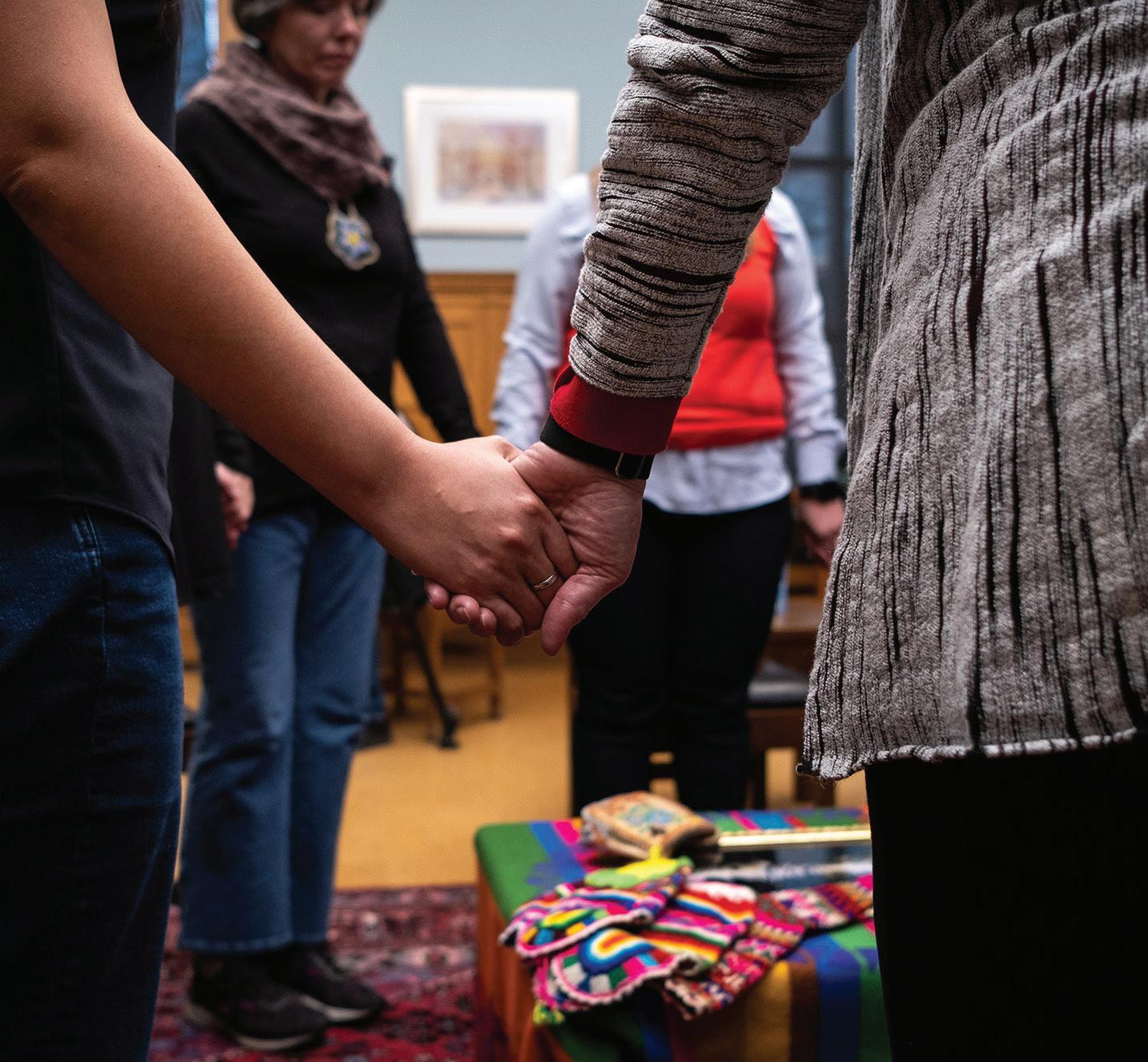
FEAR, SAFETY, HEALING, PRIDE, BELONGING, CONNECTION, COMMUNITY, HOPE.
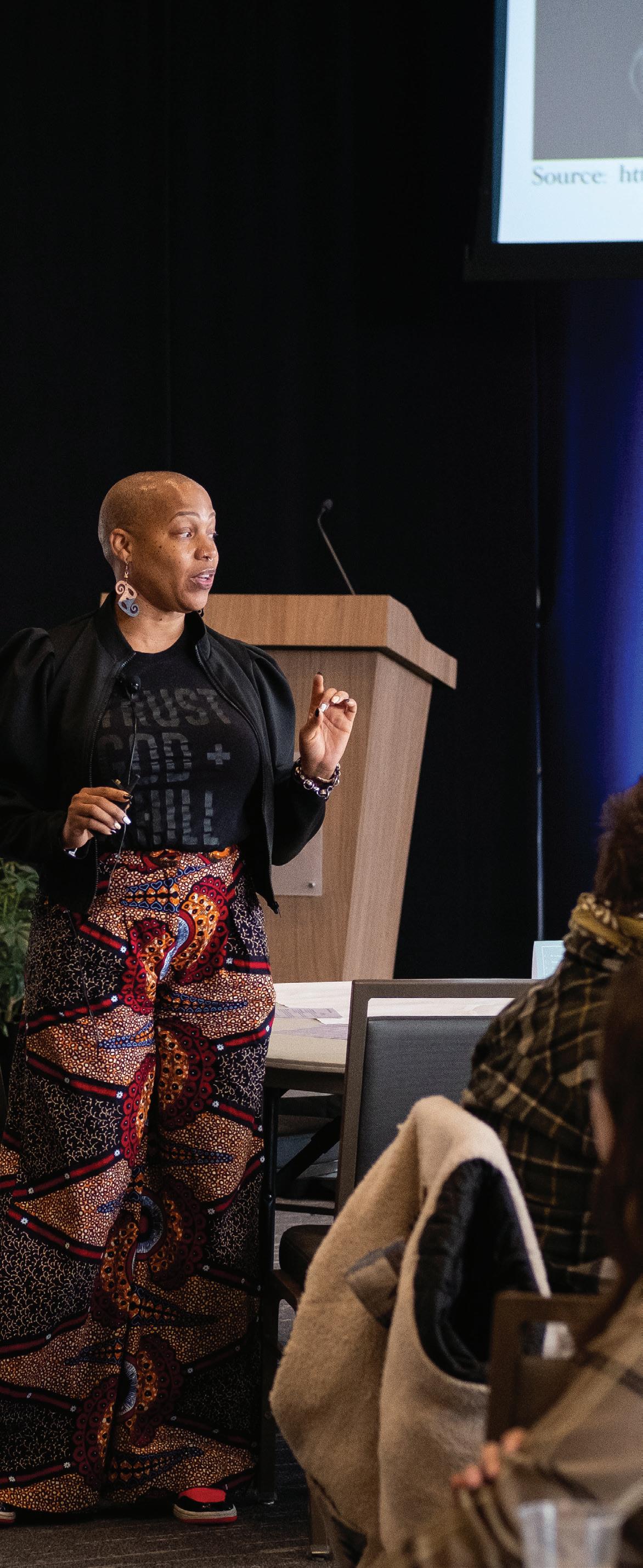



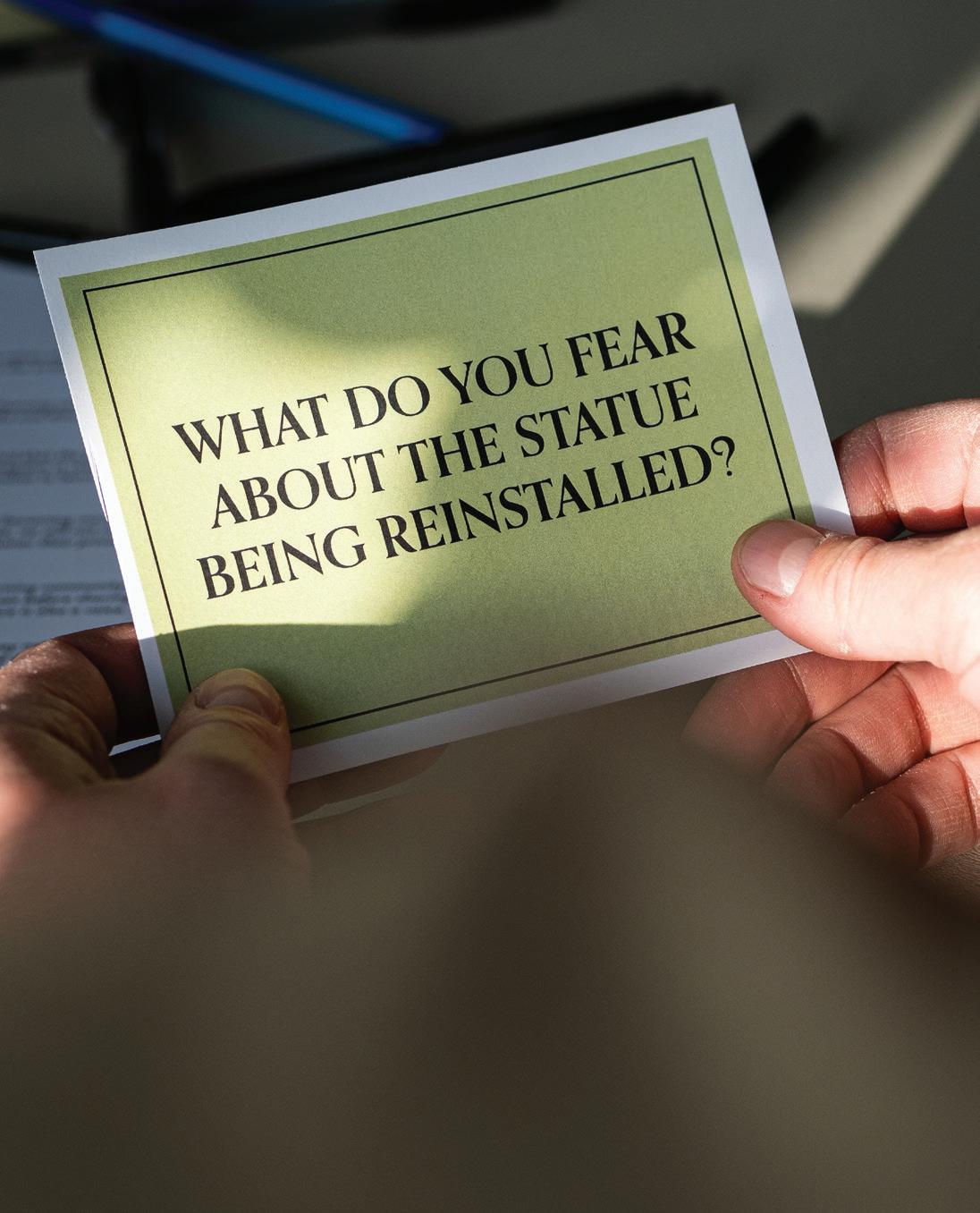

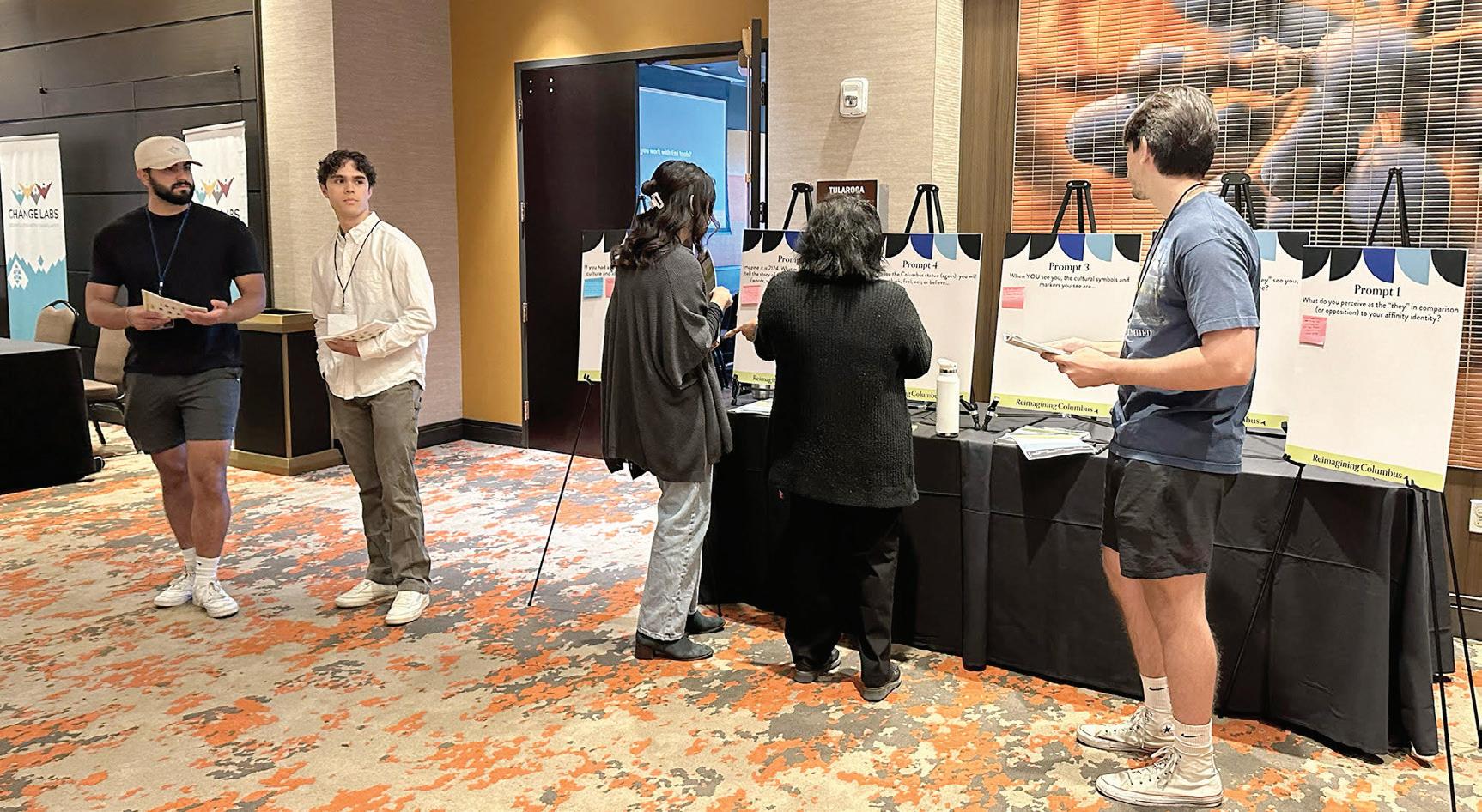


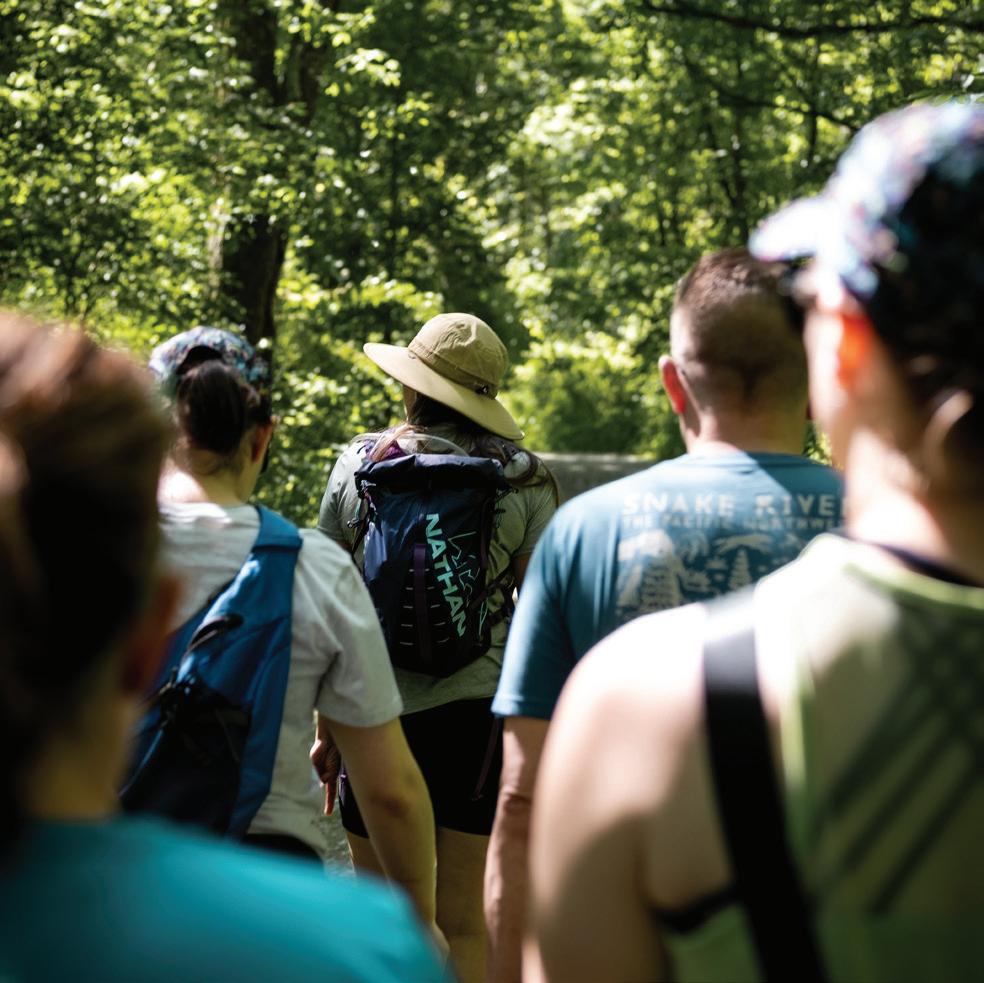
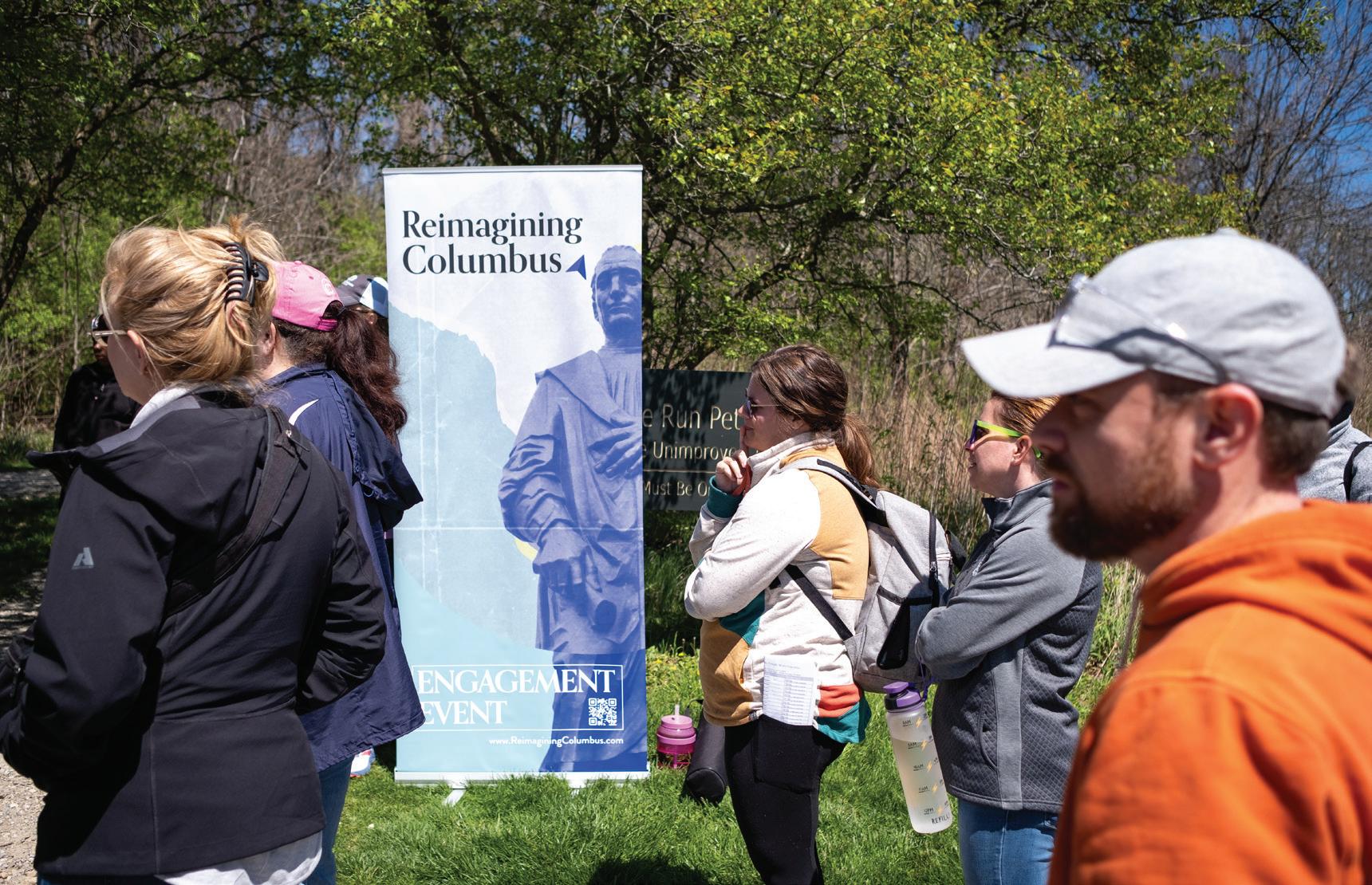


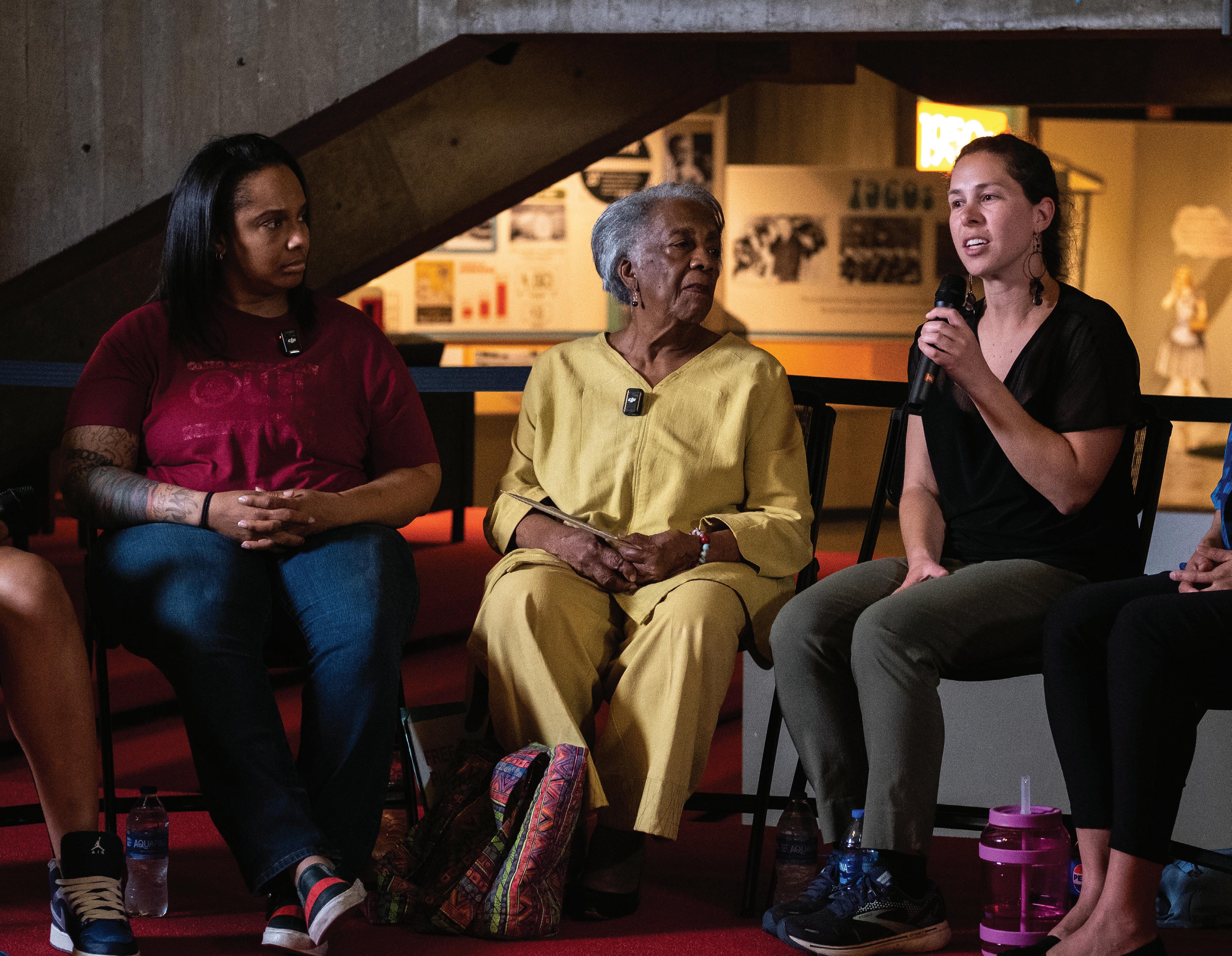
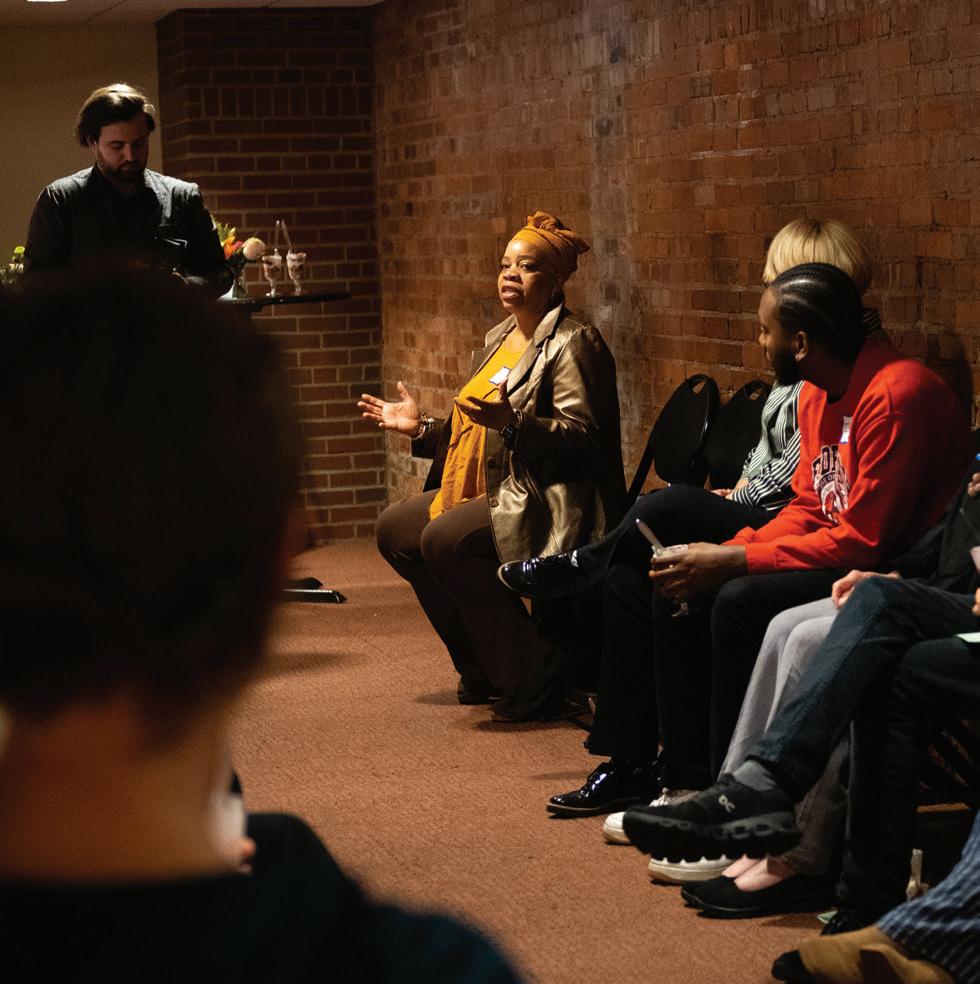
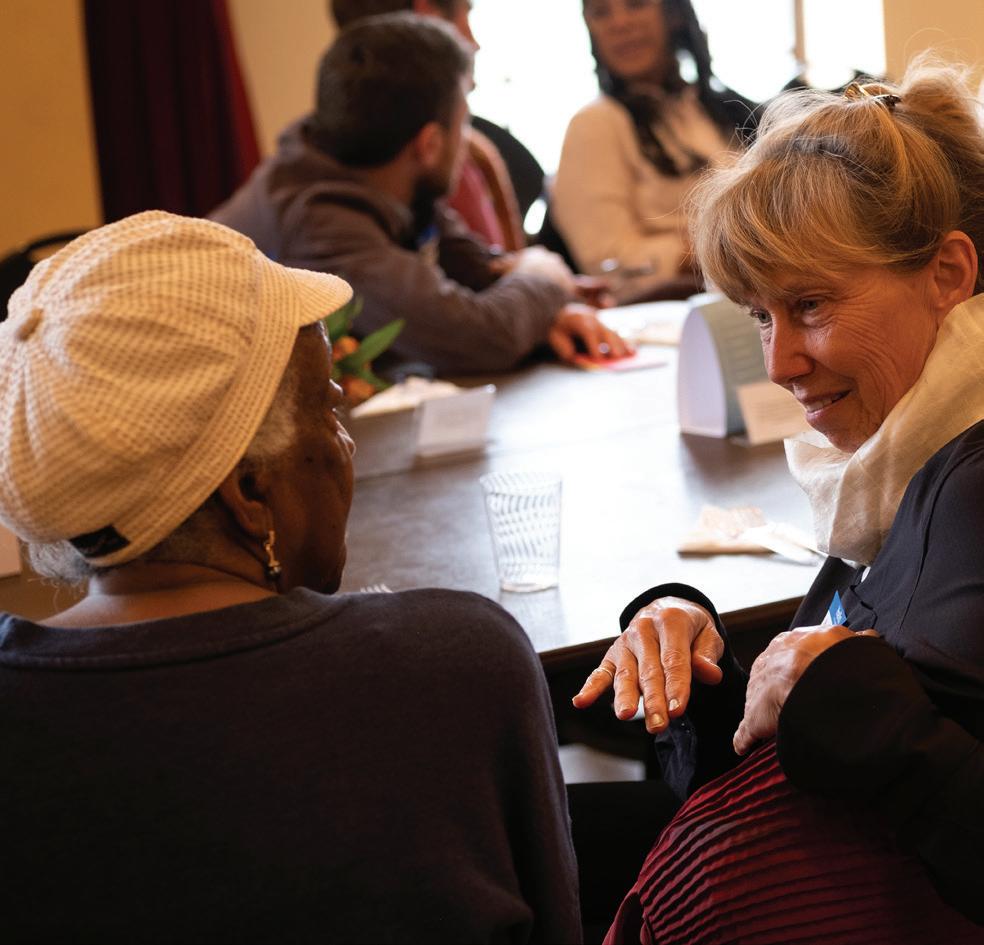
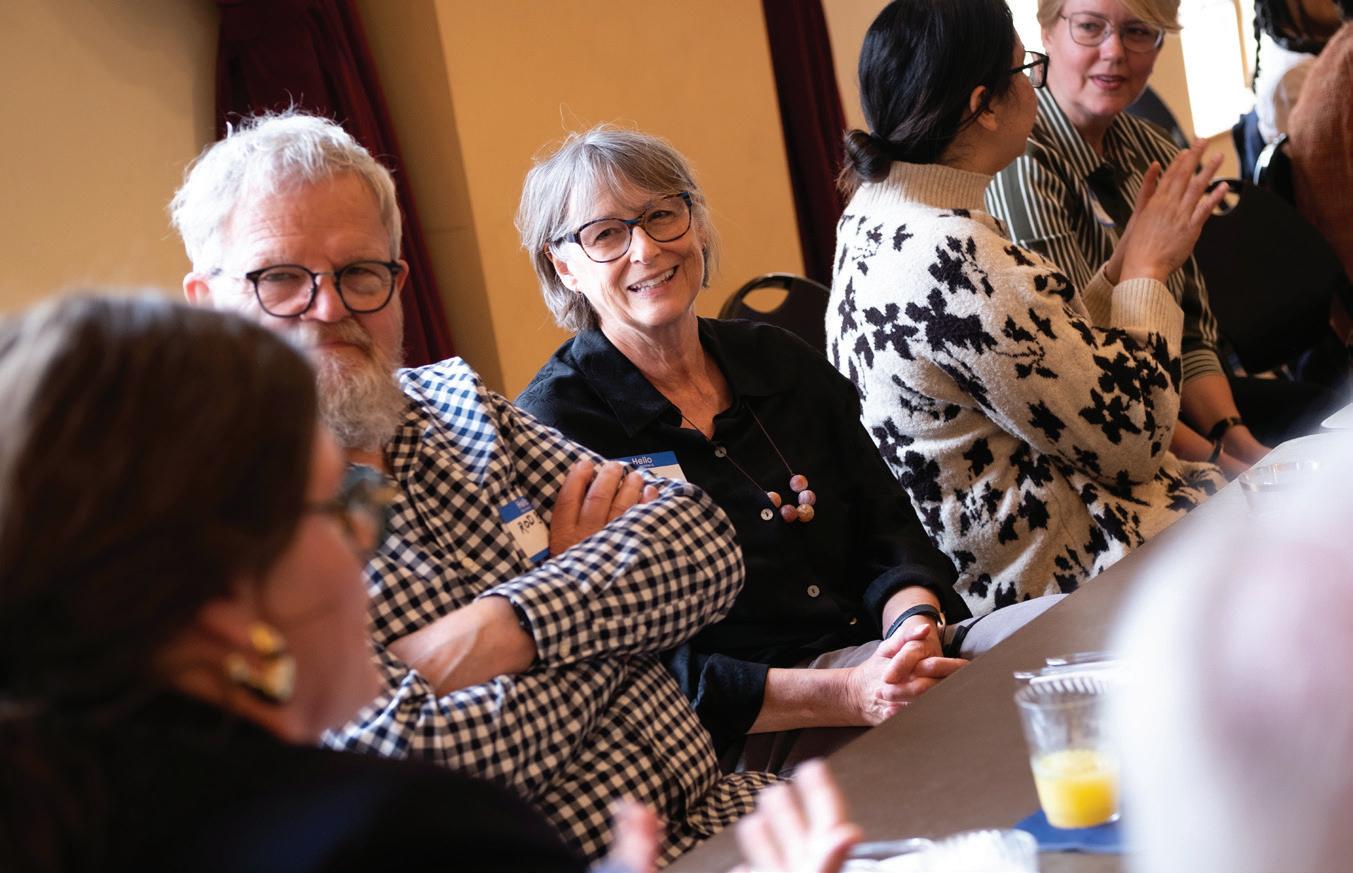

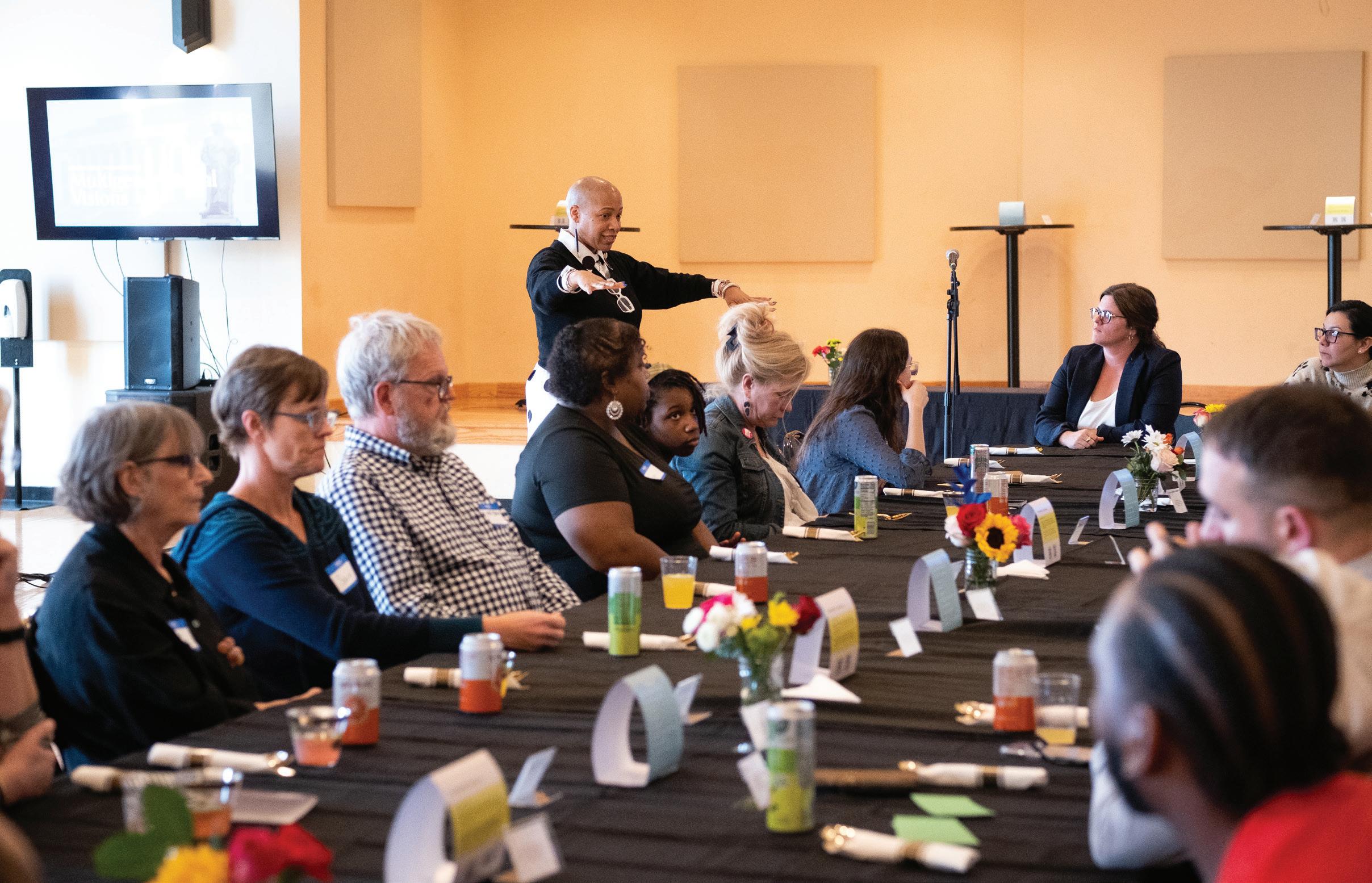
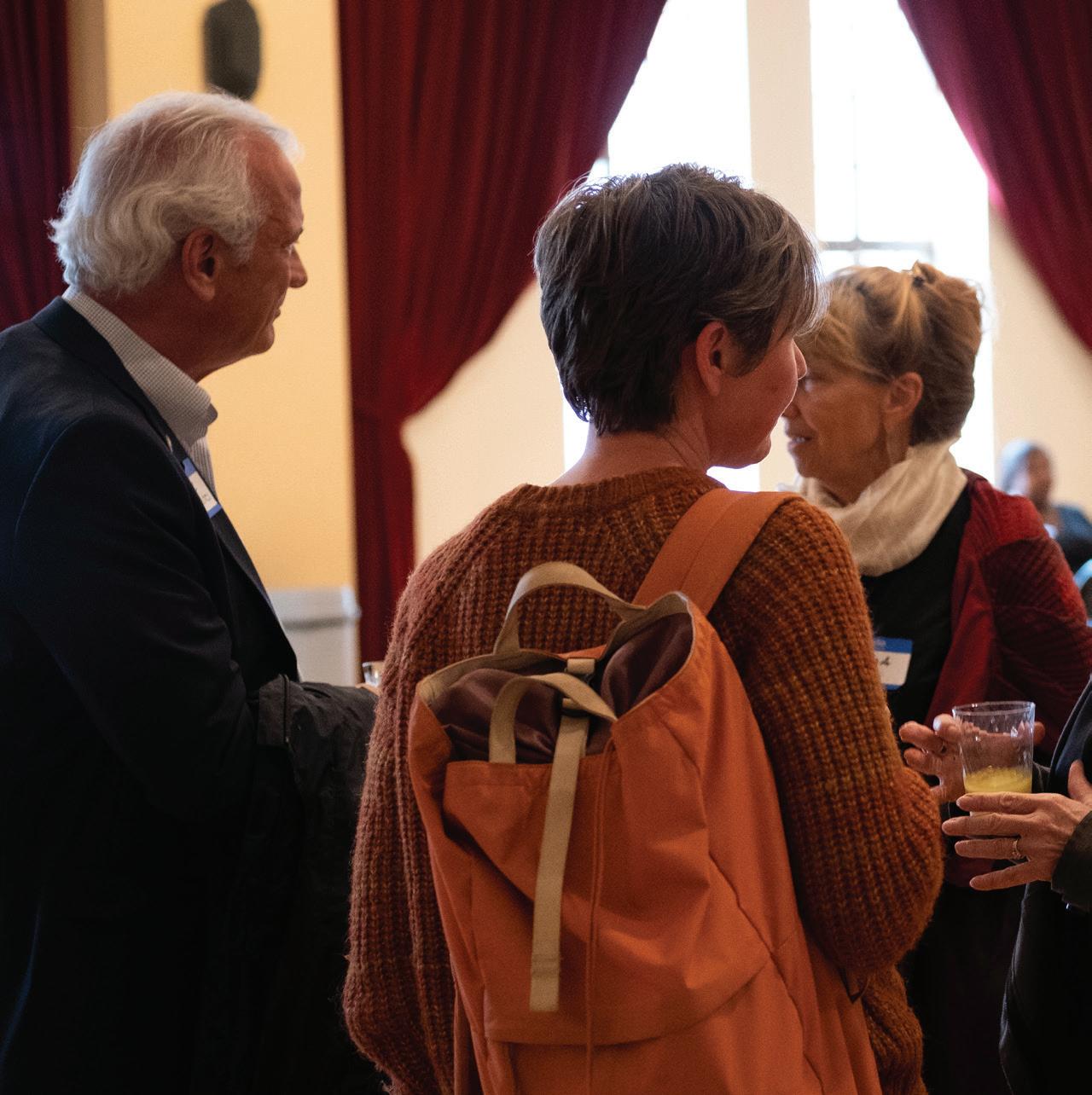
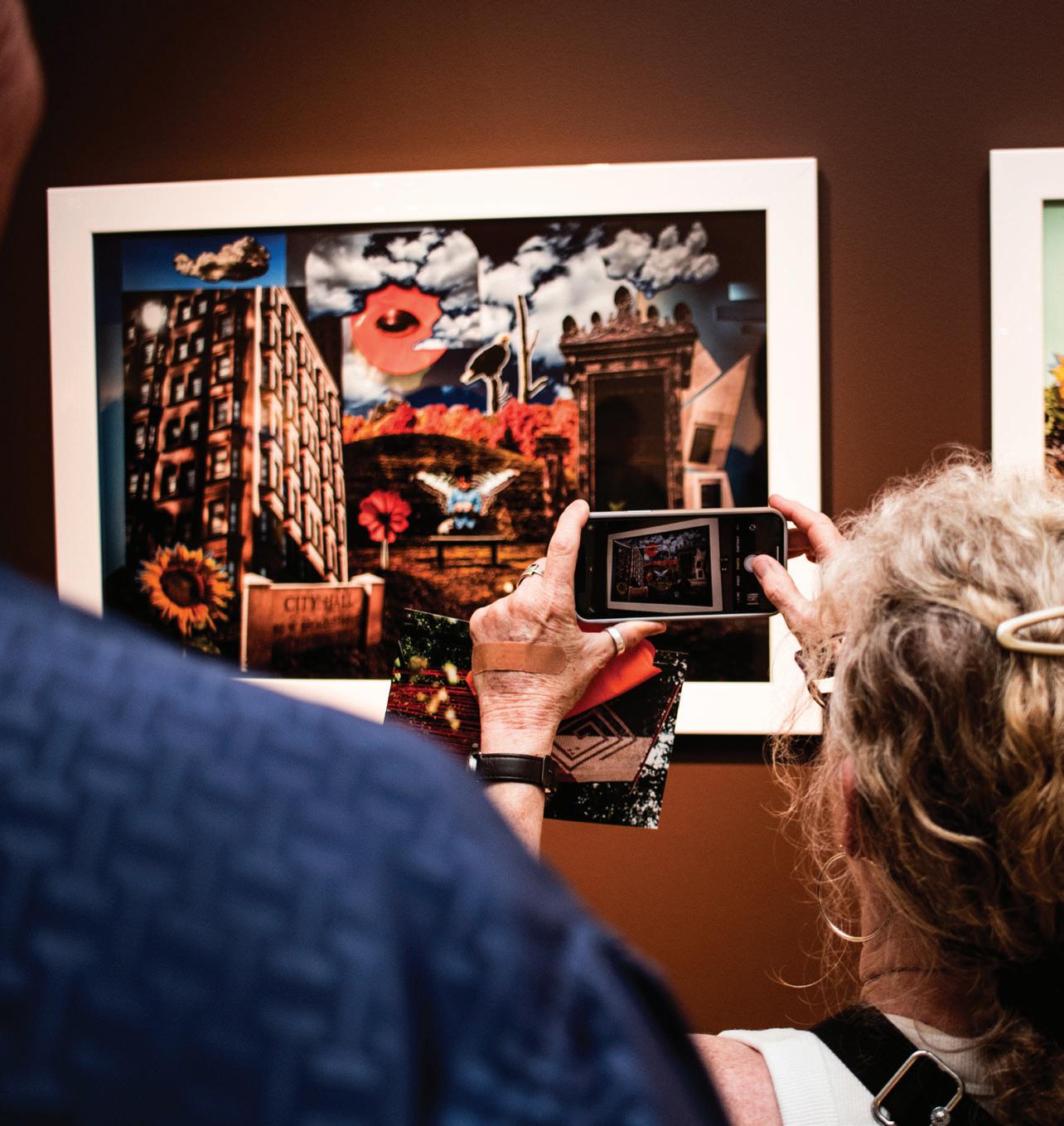

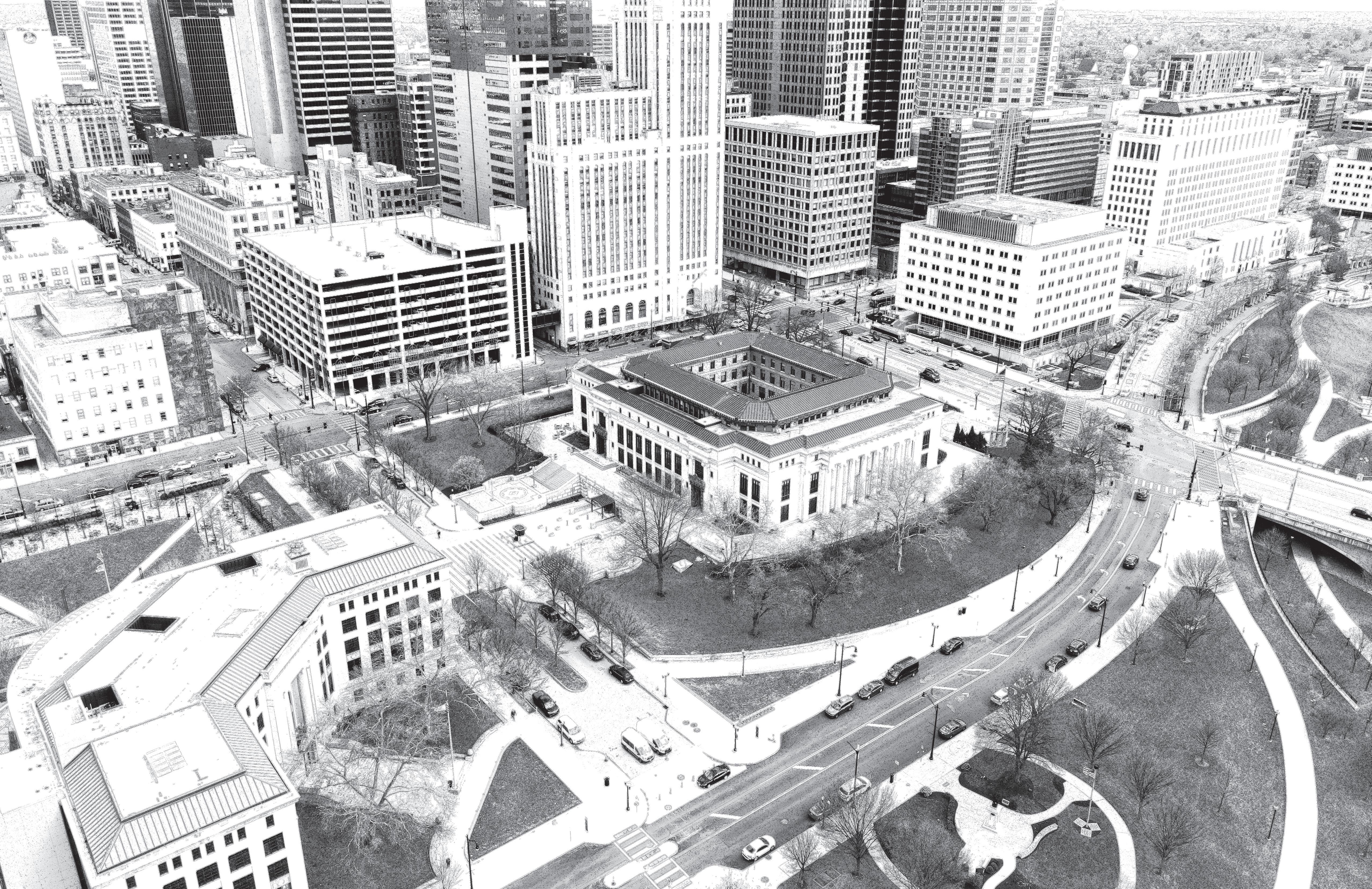
CITY HALL ART PLAN
A CITY HALL FOR THE PEOPLE
CIVIC SIGNIFICANCE
Completed in 1928 in a Neo-Classical Revivalist style, City Hall was designed as a symbol of civic and community pride.

SITE PLACEMENT
Strategic placement at the convergence of the Olentangy and Scioto Rivers.
A STORY OF RESILIENCE & ADAPTATION
Columbus City Hall existed in multiple locations prior to calling the Front Street site home.
ENVISIONED AS A GATHERING PLACE
This site originally included plans for a grant Civic Plaza, complete with green spaces, access to the river, public art, and a campus of civic buildings “to stand for the civic worth and pride of the municipality.”
Utilizing input received in community conversations, a vision was created for the future of public art on City Hall’s Campus.

Columbus City Hall will be an active public space foregrounded in our shared values and sensibilities.
Through a range of temporary and permanent public art and placemaking experiences, City Hall’s campus will be a site that fosters belonging, uplifts cultural histories, and centers individual experiences.


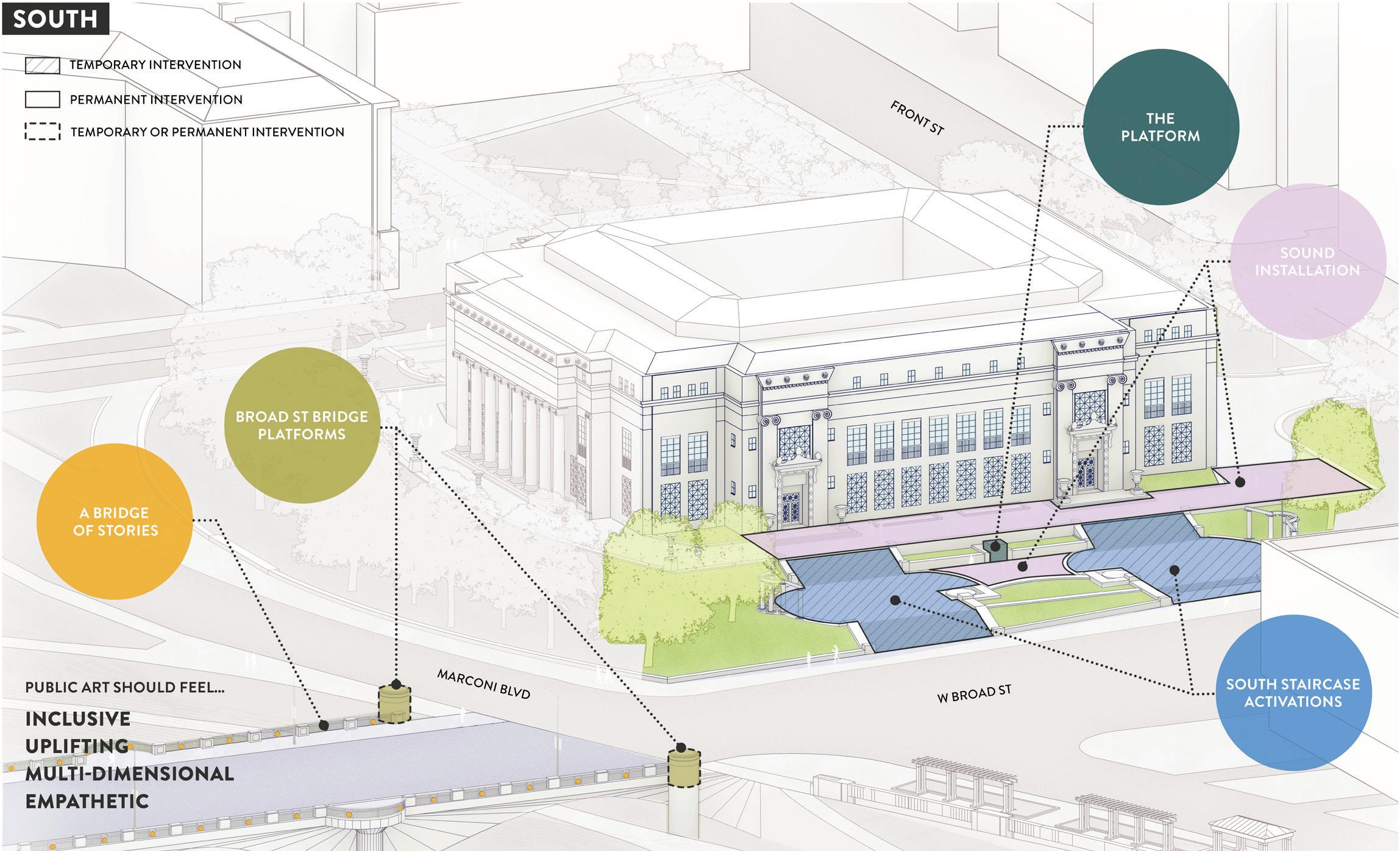
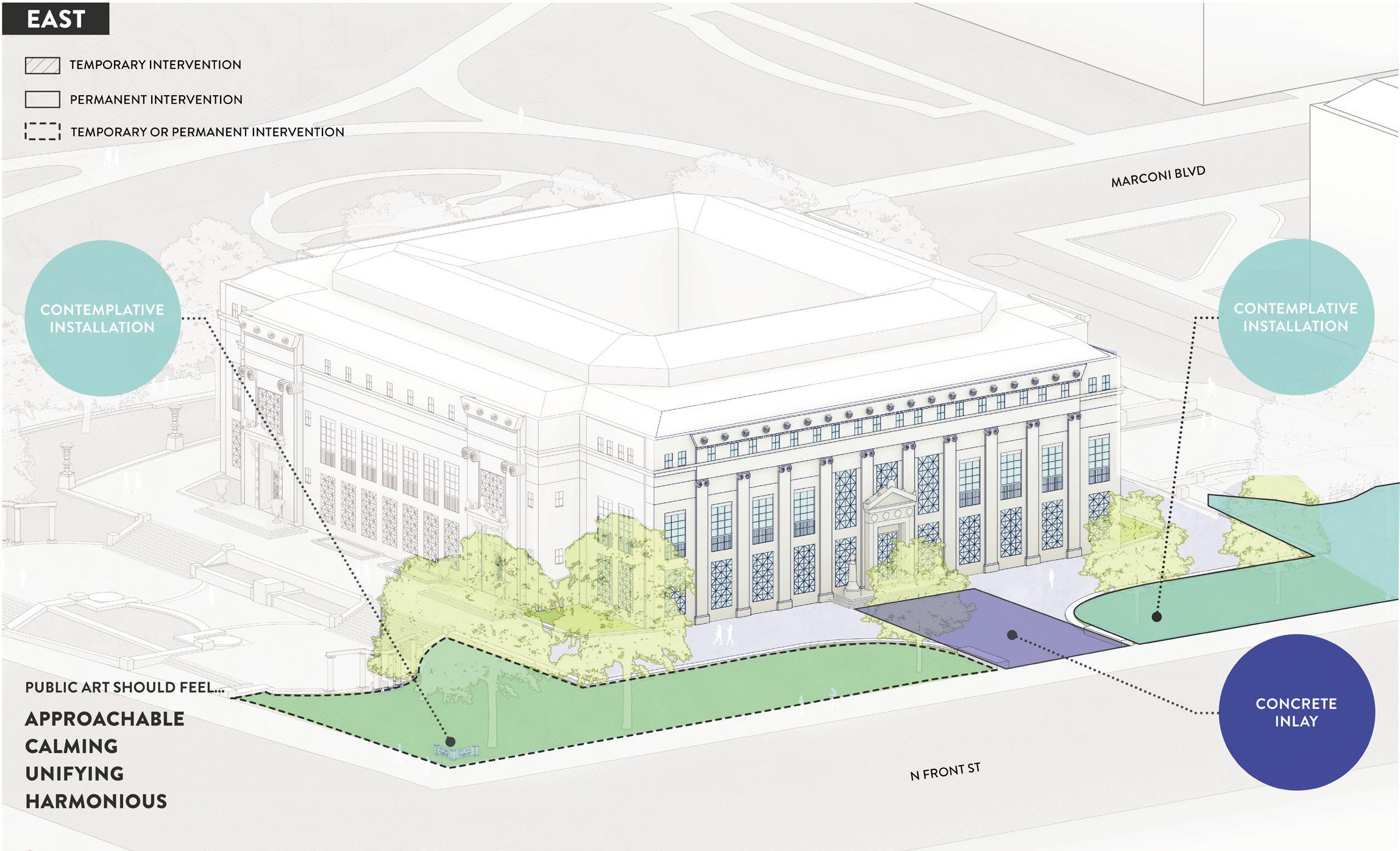
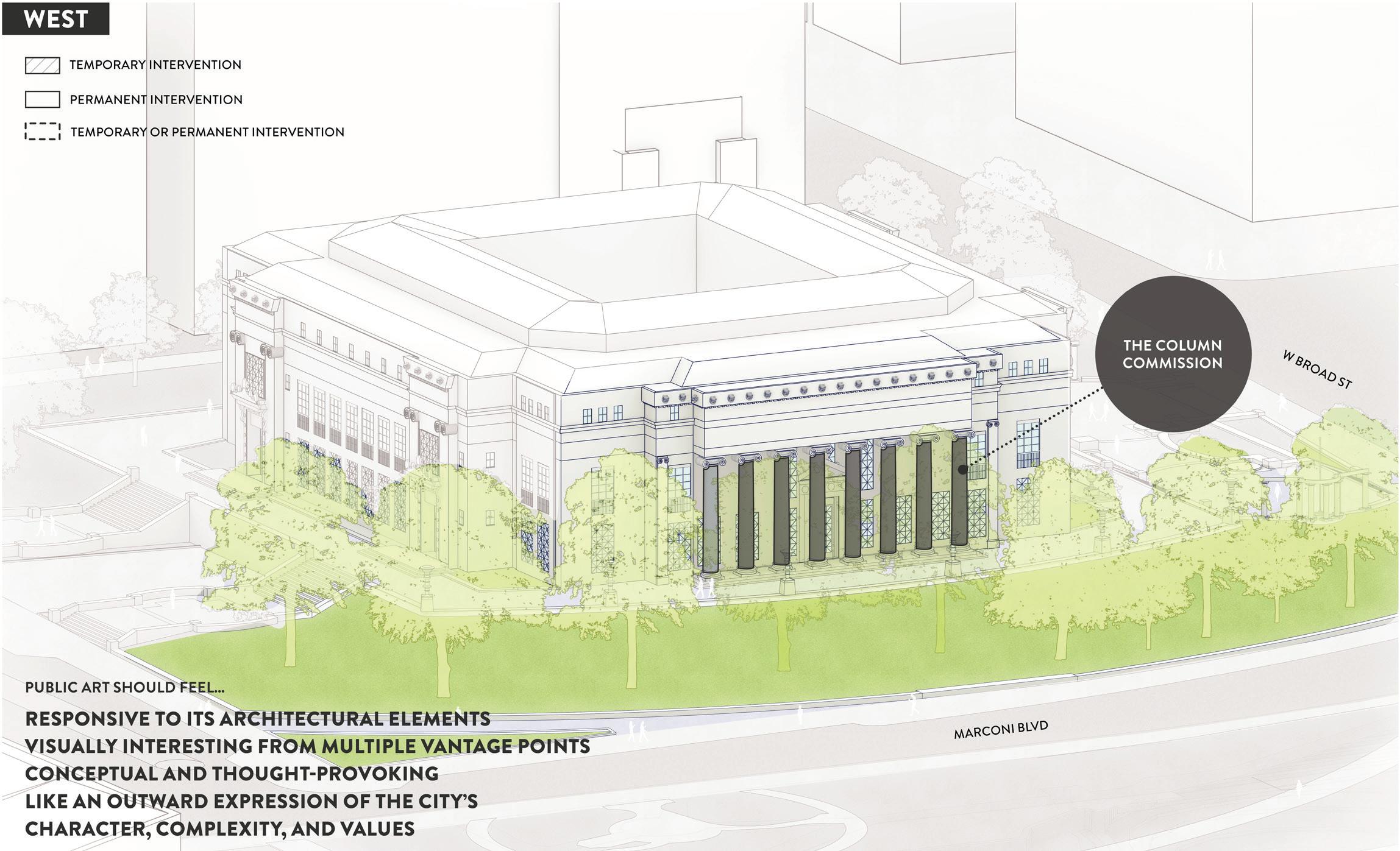

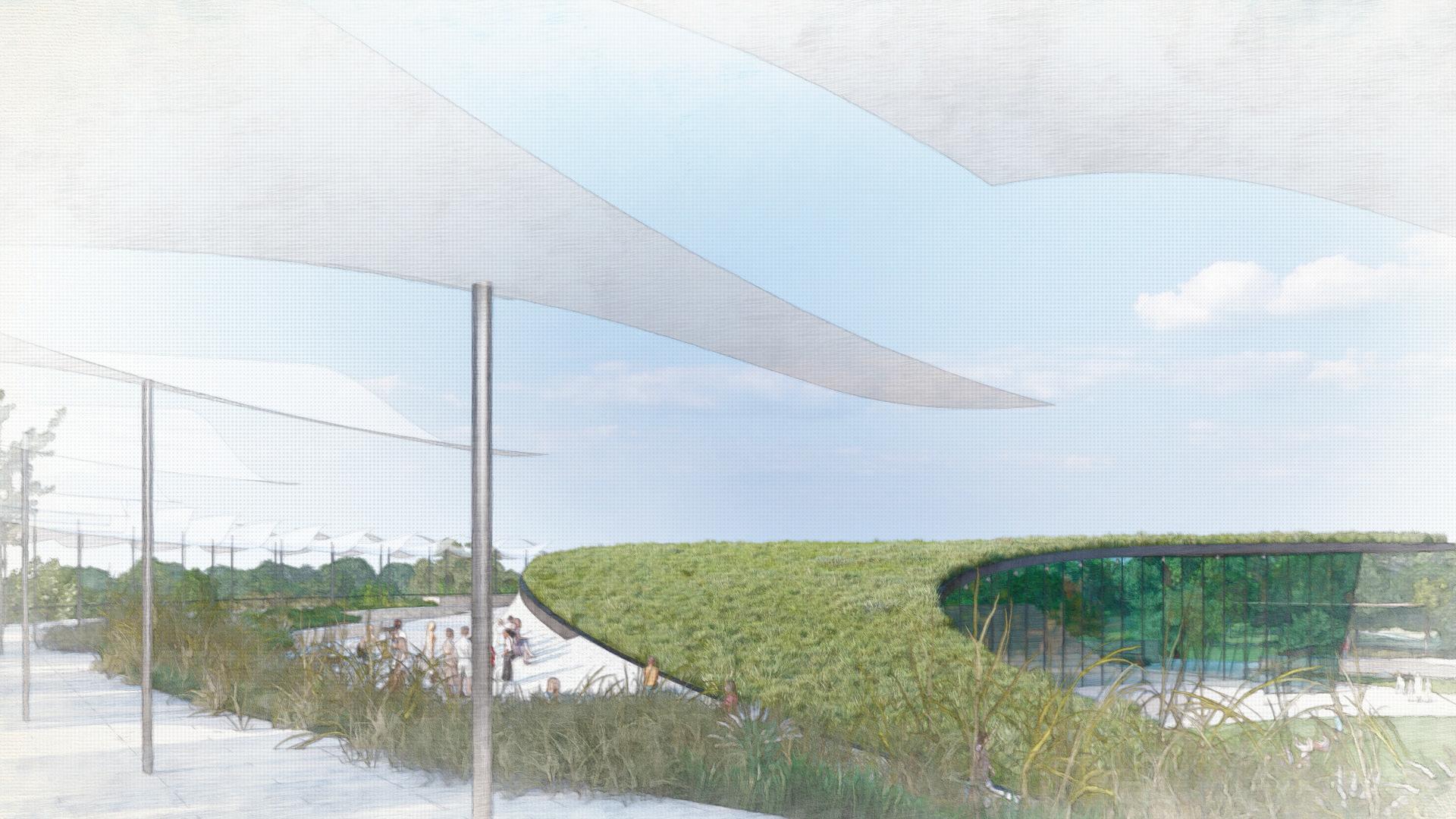
A GENERATIONAL VISION
Utilizing input received in community conversations, a generational vision was created for a cultural experience that reintroduces the Christopher Columbus statue to the community in a way that acknowledges historical facts and demonstrates respect for all, contingent upon site identification, a funding plan, and enthusiasm from residents.
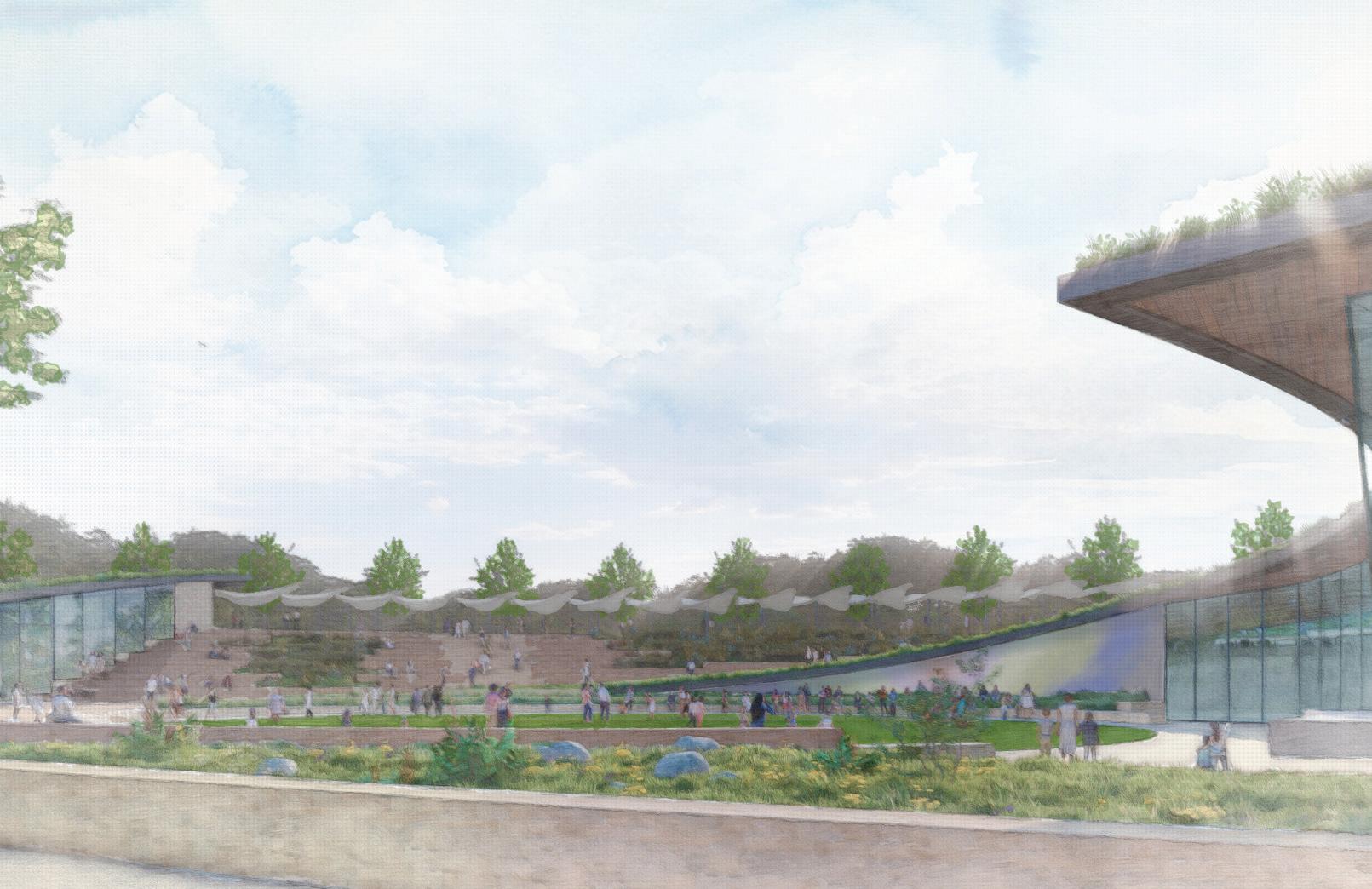
The experience includes a series of moments which serve to broadly contextualize the statue while creating an experience that celebrates the unique history and culture of our community. These moments were created to respond to the community’s desire for a welcoming space where they can feel safe and accepted as they are.
The basic conceptual organization includes a curated series of trails and spaces.
• The circulation is an upward spiral in a clockwise direction
• Directly viewing the statue is optional
• Entry to the facility is from the east
• The conceptual plan focuses on a central community gathering space
• A secured edge exists between public space and the gardens
• The conceptual plan embraces access to the river
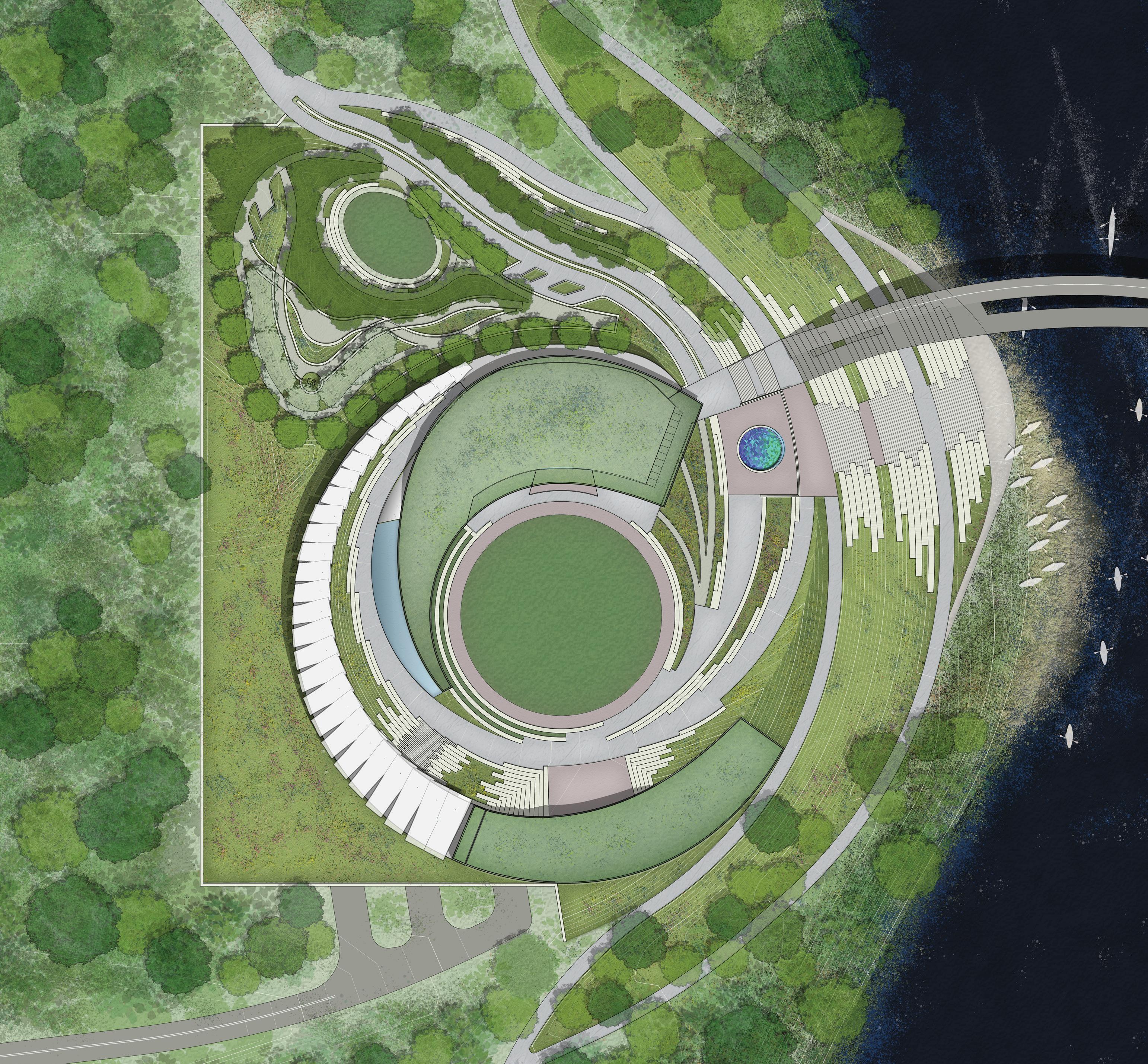
MOMENT 6: COMMUNITY GATHERING SPACE

MOMENT 1: ARRIVAL
MOMENT 3: THE STATUE
MOMENT 2: HISTORIC CONTEXT & TIMELINE
MOMENT 7: LOOK TO THE FUTURE
MOMENT 4: REFLECTION
MOMENT 5: NATURAL LEARNING & PLAYSCAPES
PLANTINGS & FORM

The selection of materials and architectural style is critical for the plan to work.
• Different types of native plant communities will be at the center of the experience
• The concept will use natural materials and curvilinear forms
• Native stone with architectural detailing is fundamental to the experience
• An abundance of vertical surfaces provide opportunities for public art and interpretation


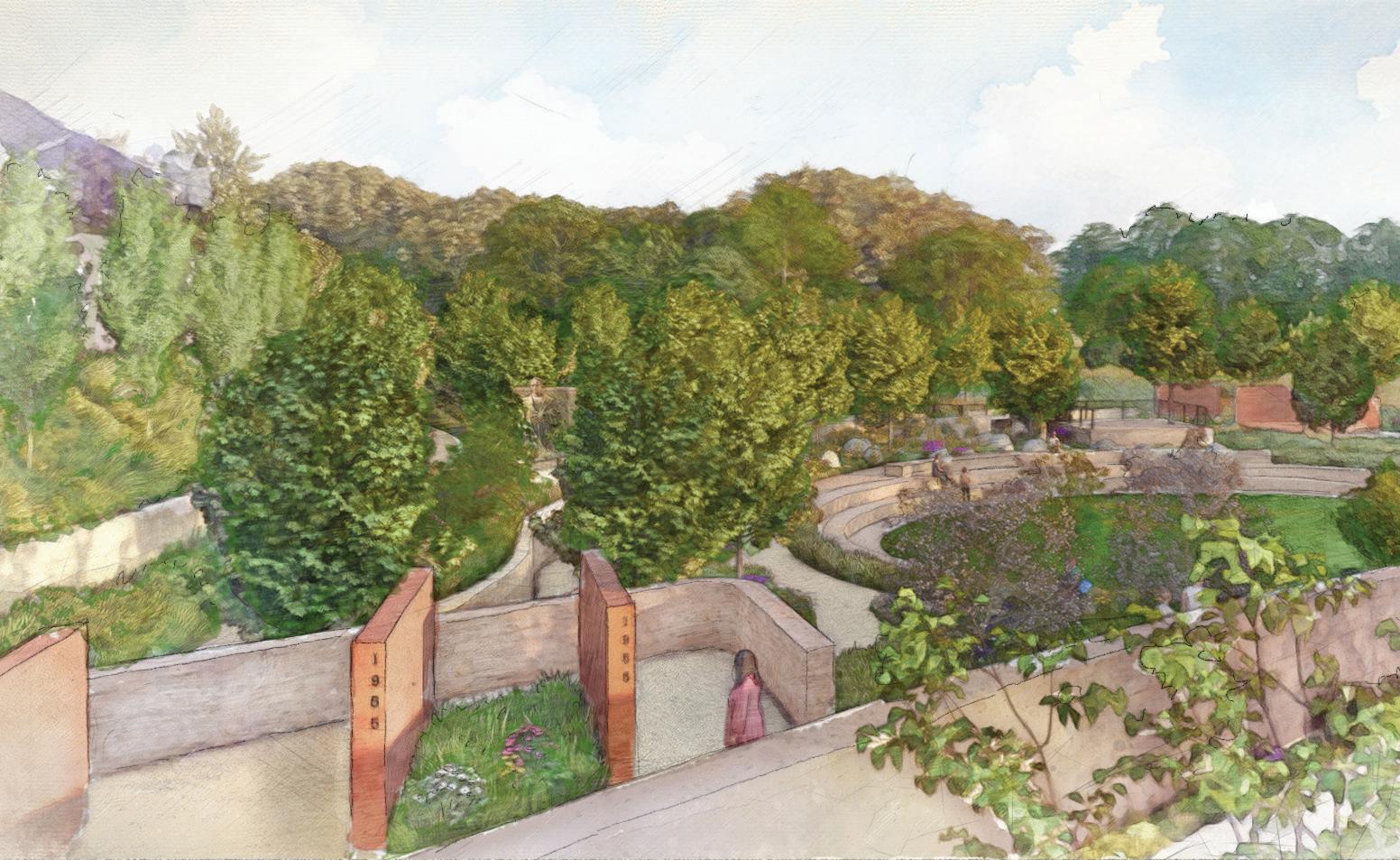


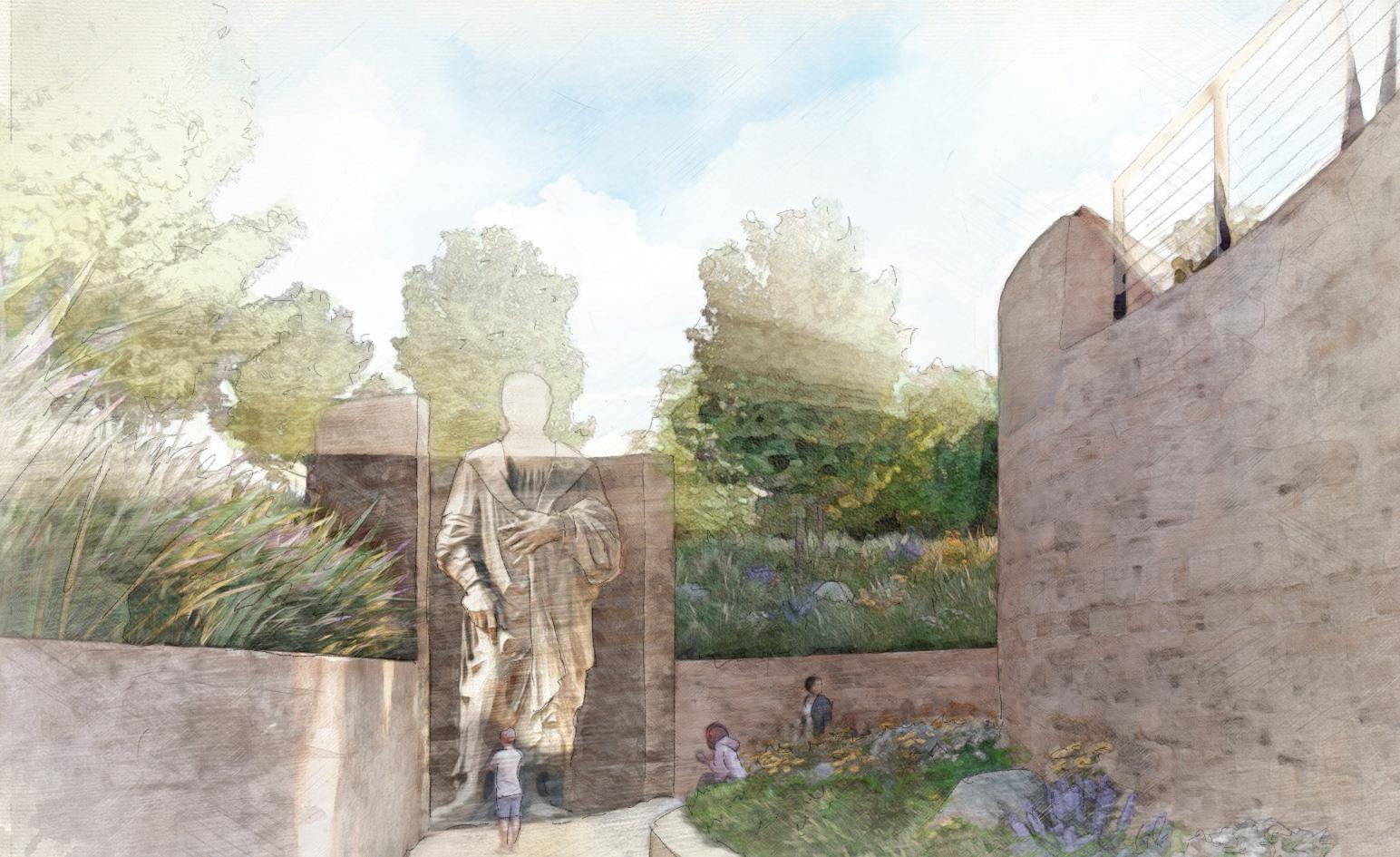
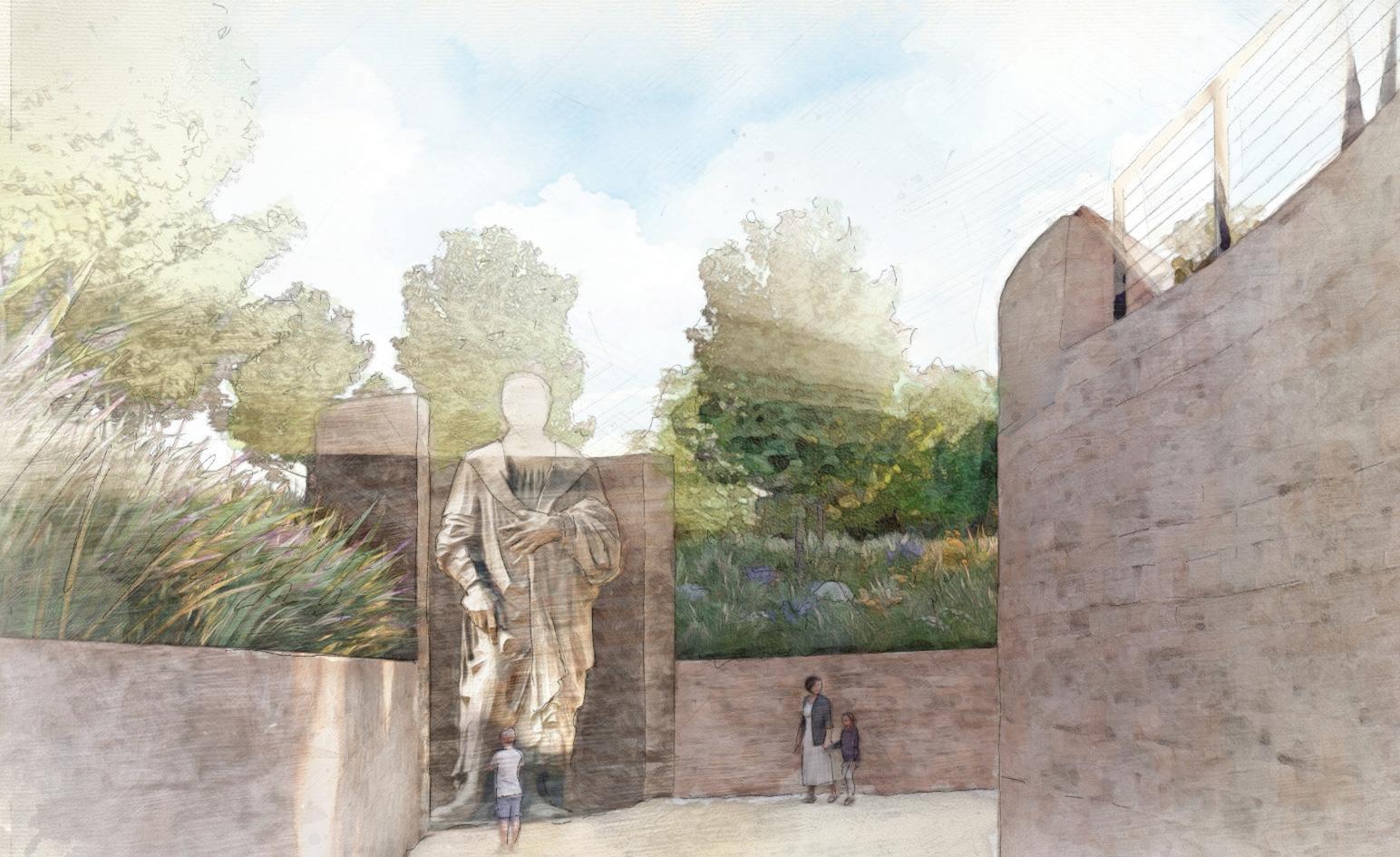


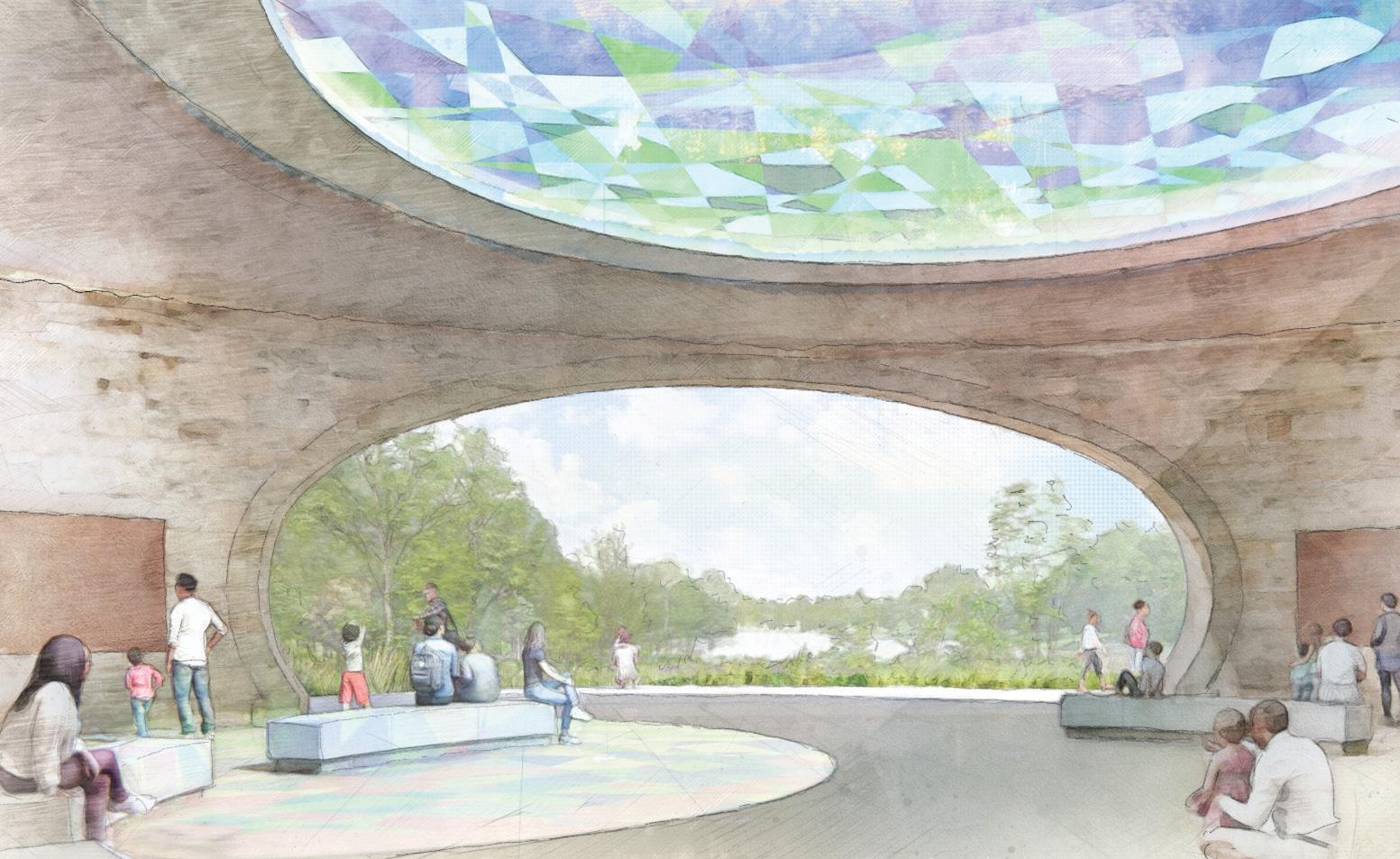

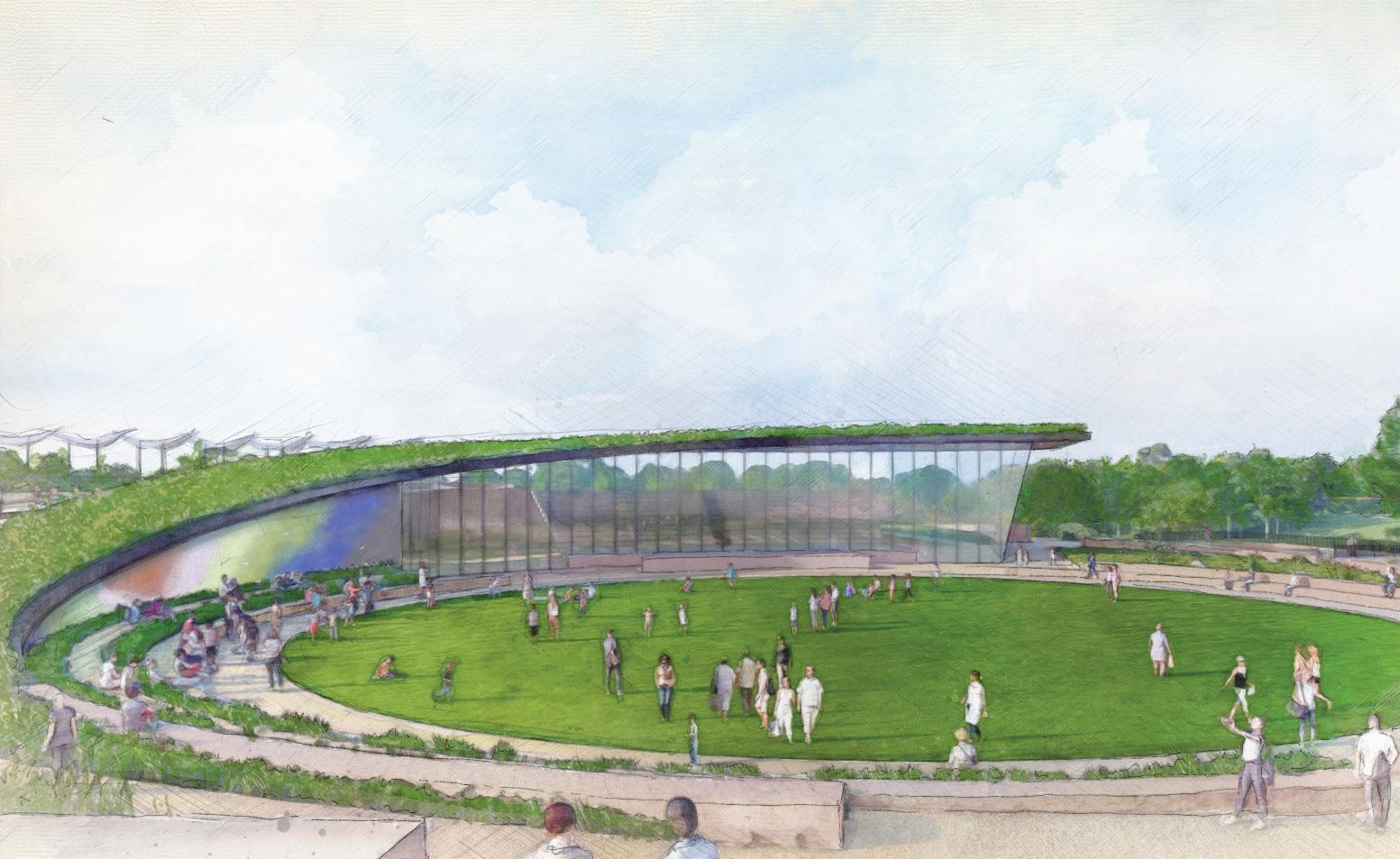
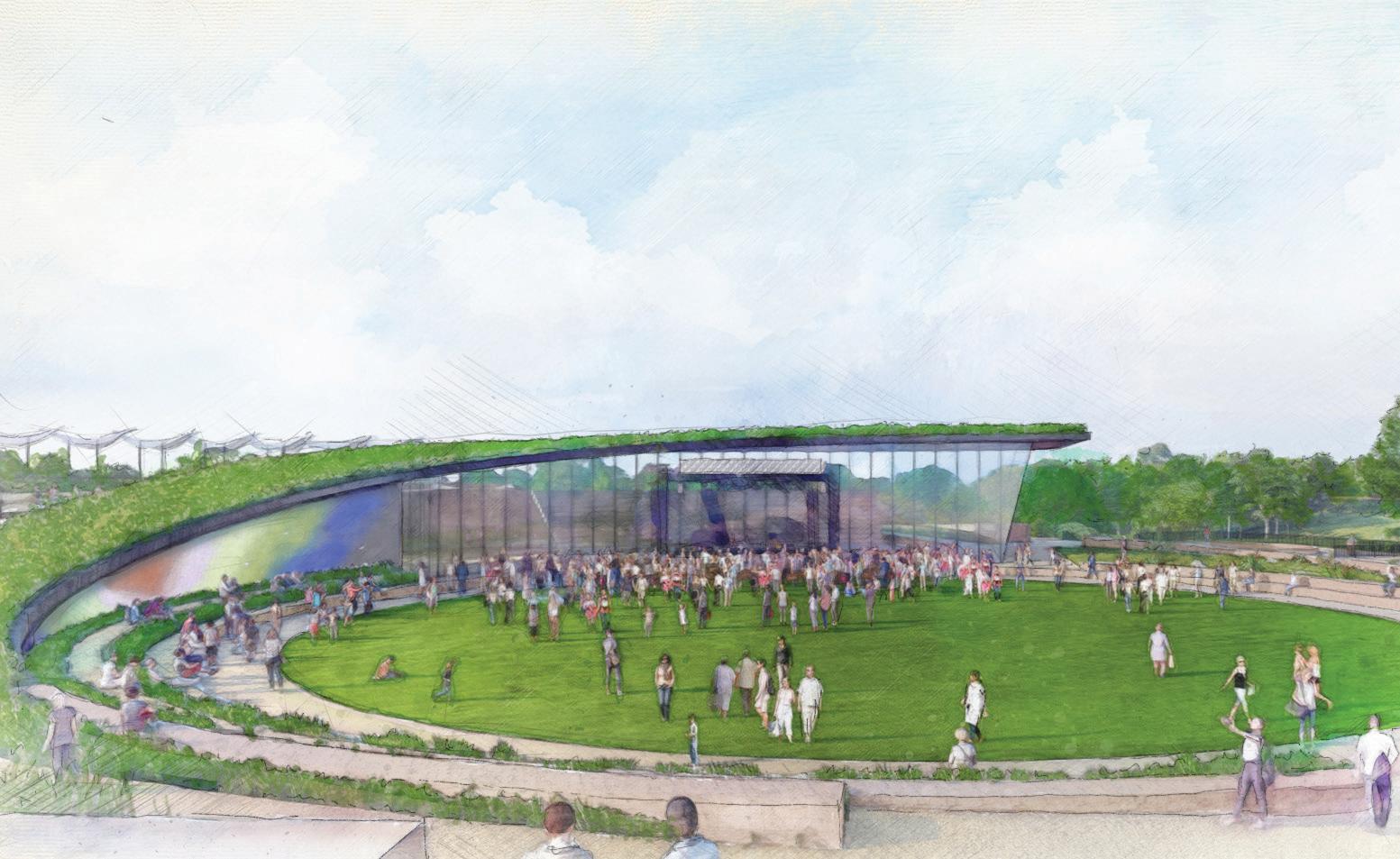

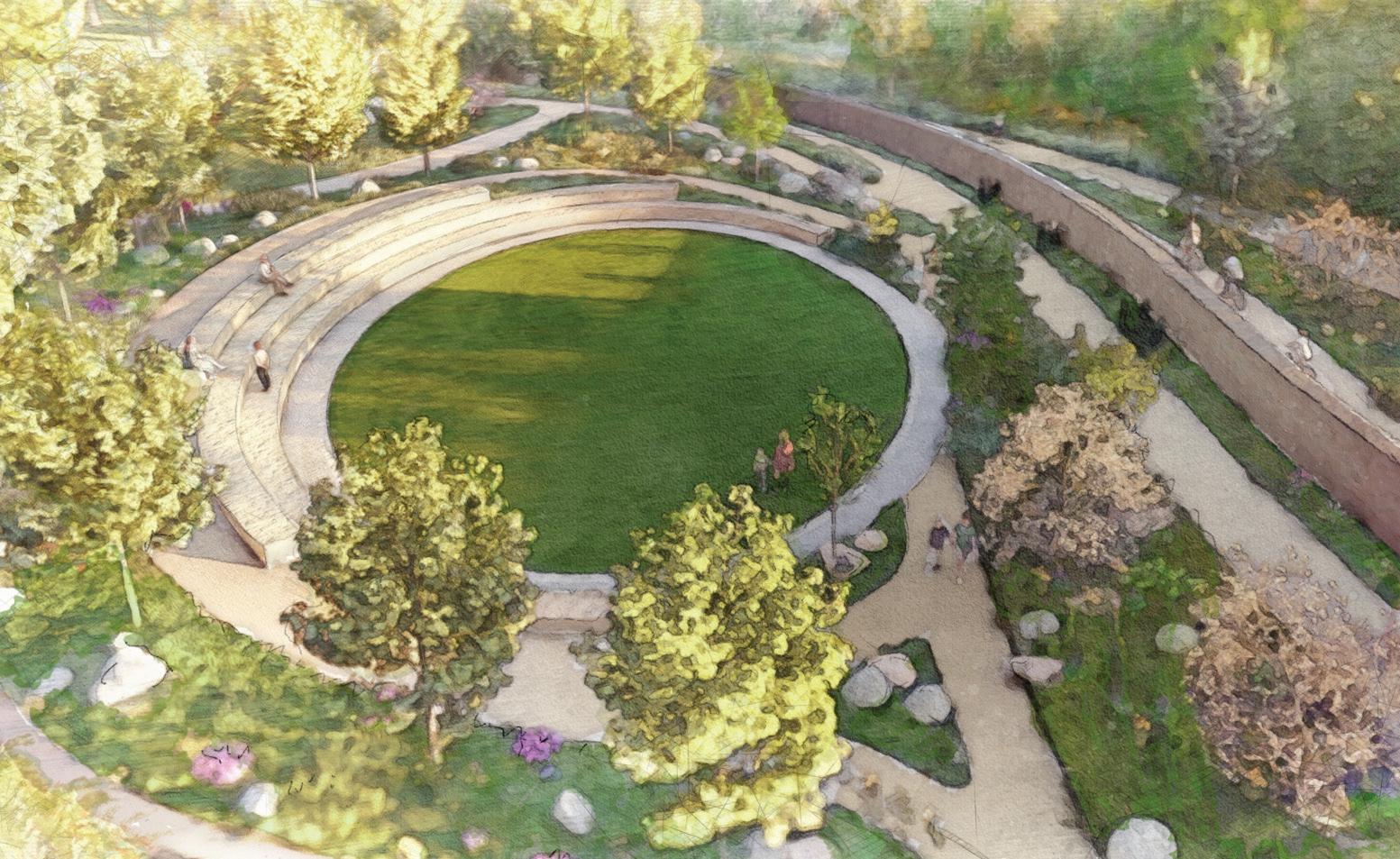
ADJACENT

DESTINATION PLAYGROUND
